



The Queer Gaze is an experimental fusion of the eccentric and eclectic, emblazoning literary sensibility with a forefront telos of innovative storytelling. Based on its name ‘queer’, it splatters a contrast against the irony; it crafts a paradoxical presence of broadening writing into an innovative ubiquitousness. Its gaze is refracted into neon colors, scattering mirrorball effervescence of the saccharine, vicious, dauntless, and vulnerability. It tremors. It seethes with rage and fangs. It tiptoes into an arabesque of nuance. It is rainbowy flamboyance with a wink of mercurial. It is the grind of teeth against shards. The Queer Gaze aims to be magnified in its whole unapologetic queerness and acerbic glam.

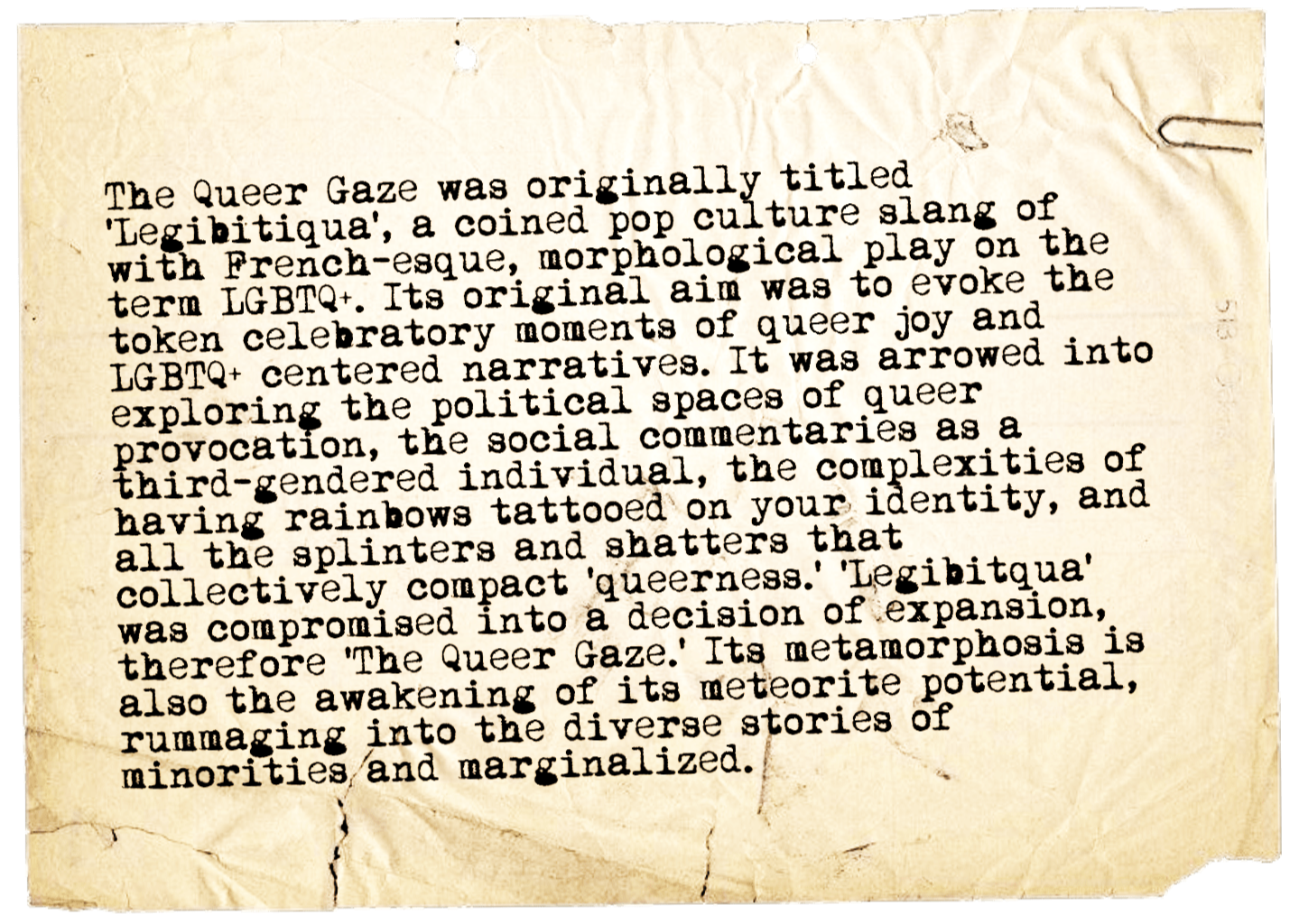
‘The Queer Gaze’ is a dawning of realization that amidst all the conformity, society still brandishes queerness as something monstrous, and the only way to understand the realm of this experience is looking through the ‘queer gaze'. Our literary magazine aims to exemplify spectral voices, the all-encompassing aspects of inclusivity, and the nodal of stories waiting to sprout from their dormancy. It is a punk-frankenstein that has a surging heart for binary disruption, redefining what it means to be queer. It surges to amplify empowerment, yanking the robust literary existence from minor communities and marginalized spaces. Inspired from trailblazing theories of gender and identity, The Queer Gaze aspires to be a ferocious shrapnel against barricades of oppression. It is a glitter-spiked voice for the underrepresented. It is a quiver of individuality. It is a seismic force for revolutionary dialogues.



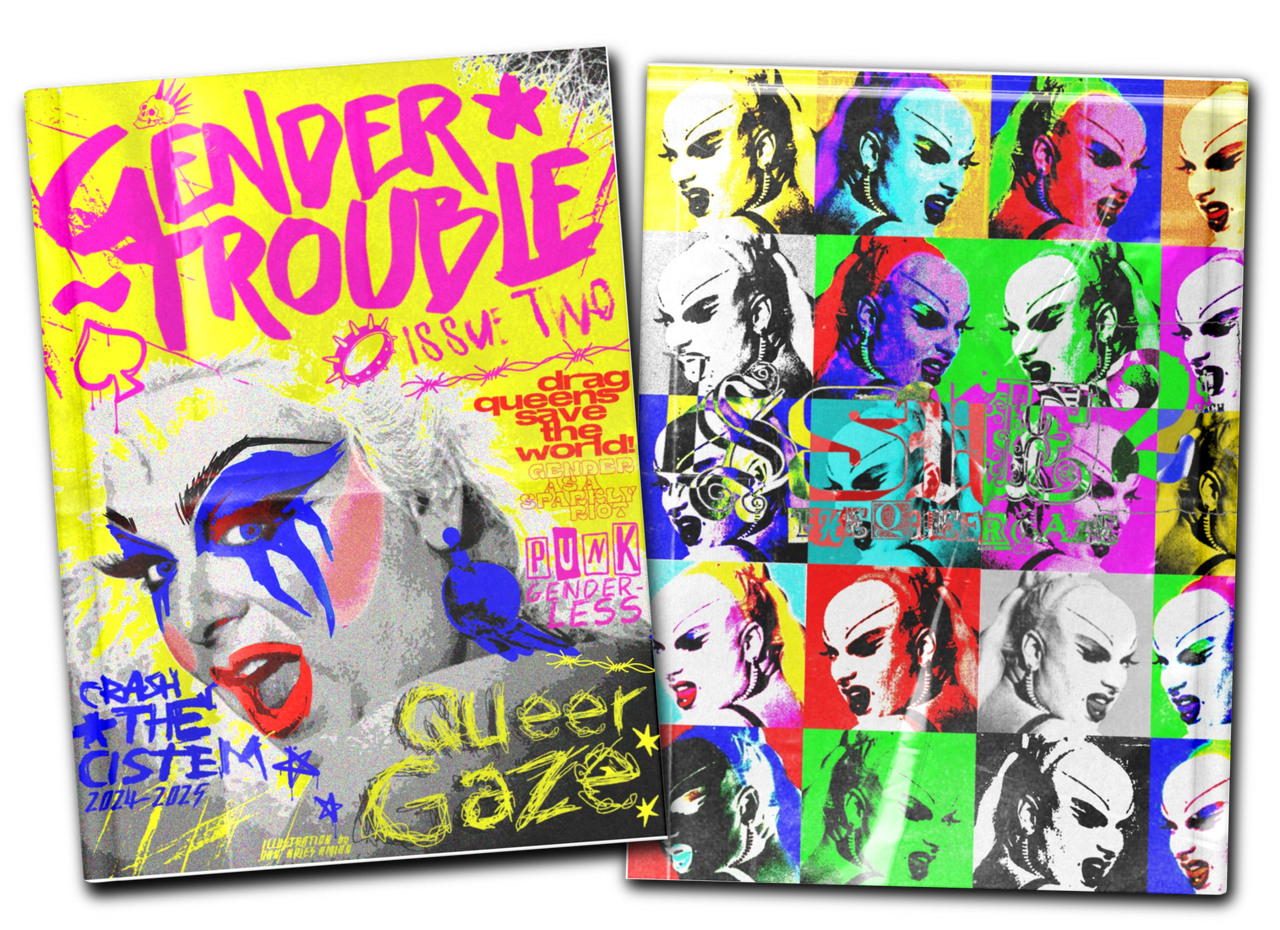
Issue 1: The Queer Gaze


Issue 2: Gender Trouble

Submissions for Issue 3 is finally open, beeyotch! ✮ ⋆ ˚。
Queer Monsterx calls for works electric with homoerotic tension, so charged it fractures the binary and slashes through the worn-out, clichéd narratives that tether transness to "deviation" from the norm. This is a reclamation of bodies, bodies, bodies. A sharp and glorious blade in glittering hands, ready to carve through societal platitudes. It’s the glamorous knife ready to gut the notion of "otherness," a lethal claw tearing through the candy-sheen, bubblegum prom queen’s dress, rupturing lesbianism and bisexuality into unyielding royalty.It’s the horror of being viewed as prey through the toxic male gaze—the seduction and the entrapment of it. Queer Monsterx is the horror that isn’t afraid to bite back, to feast, to be unapologetically monstrous. It’s Frankenstein’s queer creation, a freak femme fatale diva dripping with power, with teeth that don’t need to be hidden. It’s the blood-dripped beauty of vampires with a thirst that isn’t for salvation, but for domination. It’s the restless, vengeful ghosts haunting the spaces where they’ve been silenced, the poltergeists smashing heteronormative walls.It’s the devil in a fur cape, an unholy temptation, ready to feast on purity. It’s the final girls, no longer the virginal survivors, but the hungry, bloodied, and vengeful queens—ready to devour their killers, cannibals gluttoning their way into destruction.Queer Monsterx is the horror of queerness, the grotesque turned divine, a siren's song calling forth the darkness, not as something to fear, but as something to embrace. It's gothic allure, the creature from the black lagoon rising up from the depths of repression, swallowing everything that is gay in its path. It's the mummy, wrapped in layers of expectation, only to unearth itself as a goddess of terror and beauty. It's werewolves howling under a silver moon, claiming their right to be wild, unapologetically, fiercely other.It’s time to rupture the confines, to devour and to become. To reclaim the grotesque and turn it into something untouchable, undeniable, and untamed. The queer monster is ready, and it’s more fabulous than ever.
Submission Guidelines
Poetry. We're seeking poems that howl under the queer moonlight, unearthing the divine in the grotesque. Whether it's an ode to a vampiric lover, a ballad of a siren’s vengeful song, or an elegy to a repressed self now reborn, explore how queerness shatters binaries and reclaims the monstrous as beautiful. Bring us verses that slash through clichés and bite back against the male gaze.Short Stories. Write us tales of queer monsters that seduce, terrify, and dominate. Create alternate universes where werewolves howl their trans power, vampires thirst unapologetically for liberation, or mummies unravel layers of expectation to reveal goddesses of terror. Think femme fatale divas with claws, Frankenstein’s queer creation, or vengeful spirits smashing heteronormative walls. Give us gothic allure and horror that devours the confines of "otherness." Limit: 6,000 words.Personal Essays. Have you ever felt like a queer monster yourself? Tell us about the ways you’ve reclaimed your “otherness” as something powerful. Share your experiences of transforming grotesque narratives into personal triumphs. Whether it's a reflection on societal platitudes or an anecdote of embracing your inner monster, this is your space to be raw, fierce, and intelligent.Other. Take your favorite icons—fictional or real—and reimagine them as queer, fabulous monsters. Craft stories where final girls become vengeful queens, devouring their killers, or where the candy-sheen prom queen turns into a feral beast dripping with power. Play with gothic themes and subvert horror tropes with audacious, queer energy.Artwork. We’re looking for visual art that embodies the essence of Queer Monsterx: drawings, paintings, digital art, photography, collage, sculpture—any medium is welcome. Capture the gothic beauty of vampires, the ferocity of werewolves, or the divine terror of sirens and mummies. Make it fierce, make it unapologetic, and make it QUEER.
Accepted Mediums
- We welcome submissions of any medium, including poetry, short fiction, essays, visual art, photography, and hybrid forms.- All literary submissions with unconventional style must be in PDF format. For literary works that follow the stylistic conventions, submit them as docx.- Images and artwork should be at least 300 dpi for quality purposes, and must be in PDF or JPEG format
Submission Requirements
File Submission. If submitting multiple pieces, please attach each as a separate file. This applies to short poems as well: one poem per file.Word Count.
Short Stories and Prose should be no more than 6,000 words. Poetry should be no more than 5 pages.Previously Published Works. We accept previously self-published material (e.g., shared on personal blogs or social media) as long as the piece fits our theme and you retain the rights.Metadata. Include your full name or pseudonym, the title of your work, and a brief artist’s biography (up to 100 words) to the form. Relevant social media handles are optional but encouraged.Submission Limit. Each artist may submit up to 10 pieces for consideration. No exceptions.






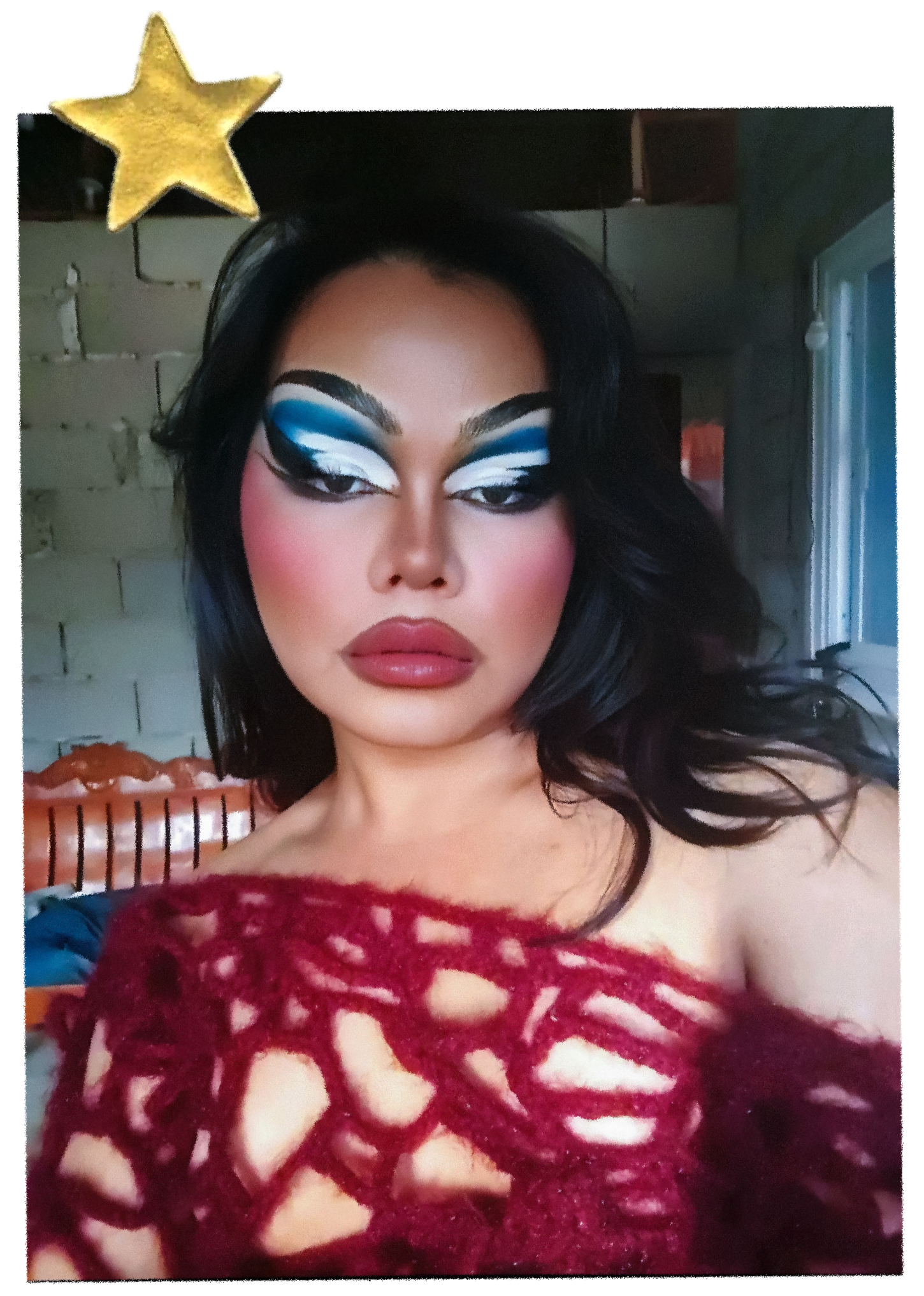
Dan Aries (she/they) is a transnonbinary Filipino artist and writer. Born and raised in a shoebox town, she longs for the city at heart. Having been published in numerous litzines, she writes about queer experience in the gaze of surrealism, gender revolution, and dynamite flamboyancy. Young as she may be, she has a fierce heart for advocating intersectional feminism. Wrapped into the colorful specter of pop culture, precolonial Filipino narratives, and diverse queer icons, she plans to write more about the rainbow community in its refracted beauty and harrowing hardships. If she is not writing or making art, Aries is probably just holed up in her room and watching drag makeup tutorials while feeling the fantasy with a mink coat. If you want to reach out, you can find her Instagram @heatherishz. Be warned though that her feed is splattered with random NSFW artworks and writing contents.

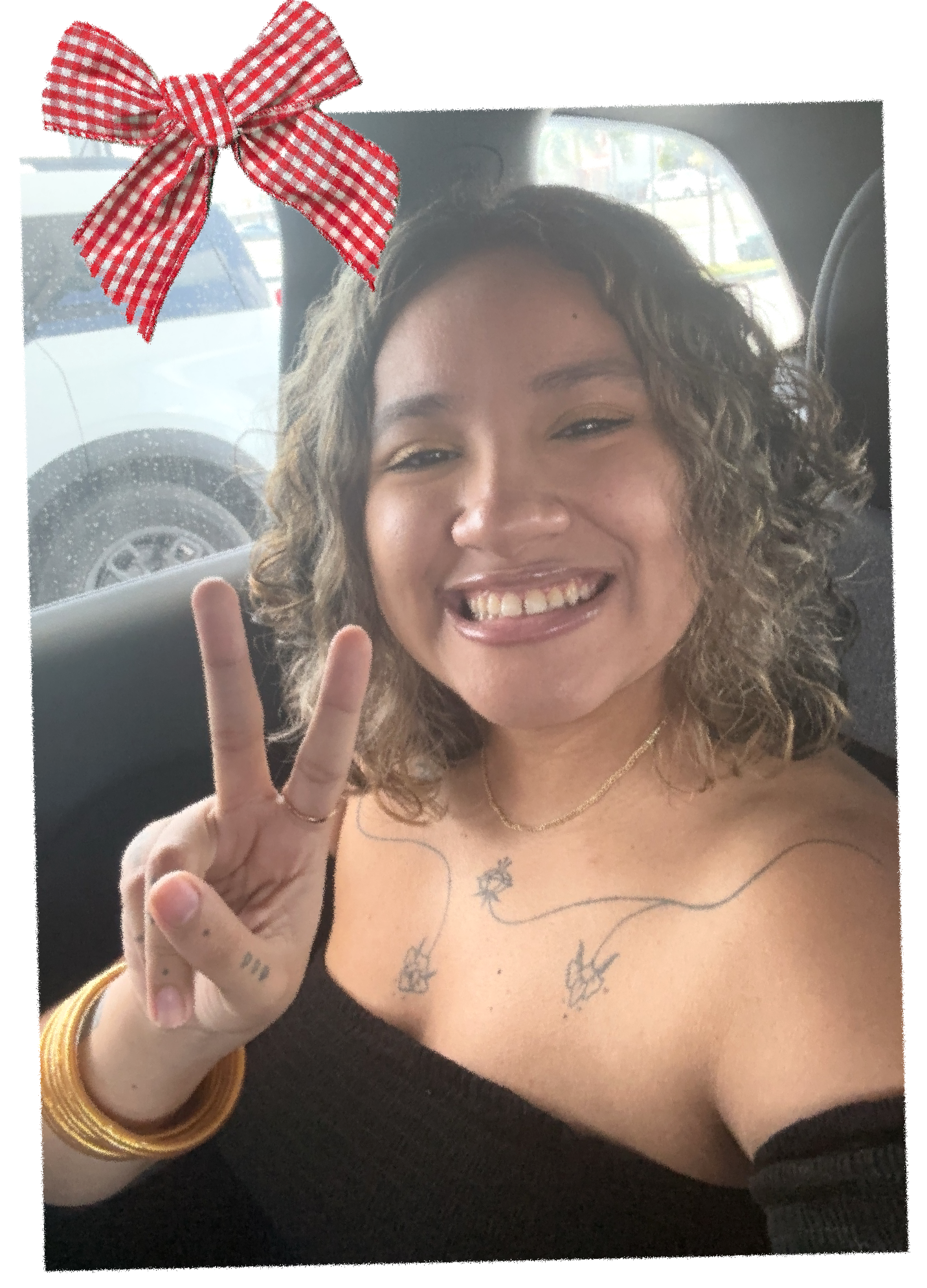
Leslie Hernández Cruz (she/her) is a current English undergrad student at the University of Puerto Rico. She’s a writer and aspiring author who spends most of her free time honing her craft. The rest of her free time is spent reading and going out with friends and family. She’s also part of the staff of Bardics Anonymous, FlowerMouth Press and Unheard Stories Lit Mag.
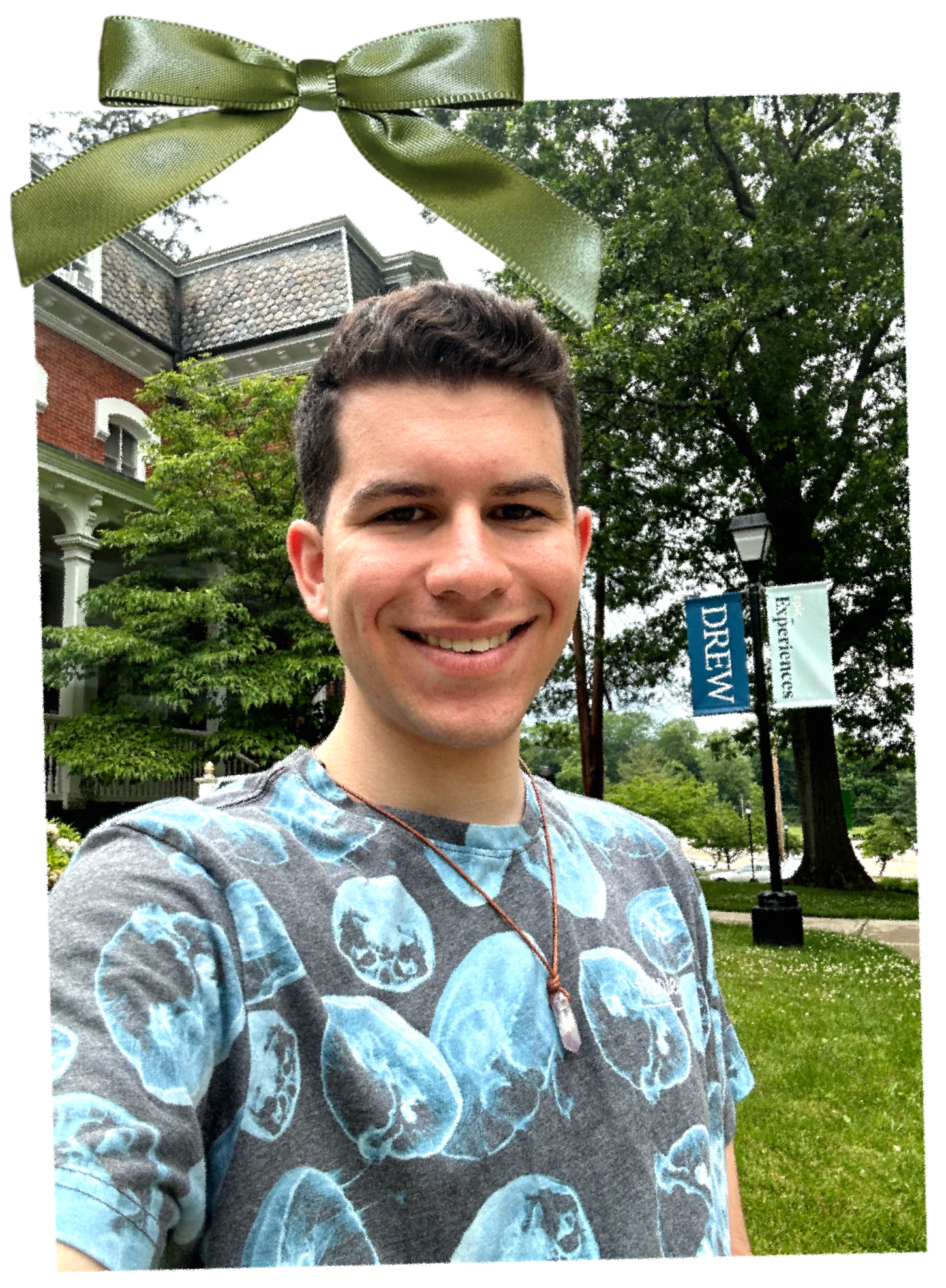
Michael is a 21-year-old bisexual poet, artist, ekphrasist, and editor from New Jersey. He is a senior undergraduate student at Drew University, double majoring in English (with a concentration in Creative Writing) and Studio Art, while also minoring in Theatre Arts. This spring, he served as the Assistant Editor of Beatdom Books, where he edited The Burroughs-Warhol Connection (forthcoming) by Victor Bockris, and issue #24 of Beatdom literary journal. Under his pen name, Indovina, his writing can be found in Fruitslice, Milk Press, Chill Mag, and Insanity's Horse (Drew University's Art & Literature Magazine). His Instagram handles are @indovina_poetry and @indovinamichael.
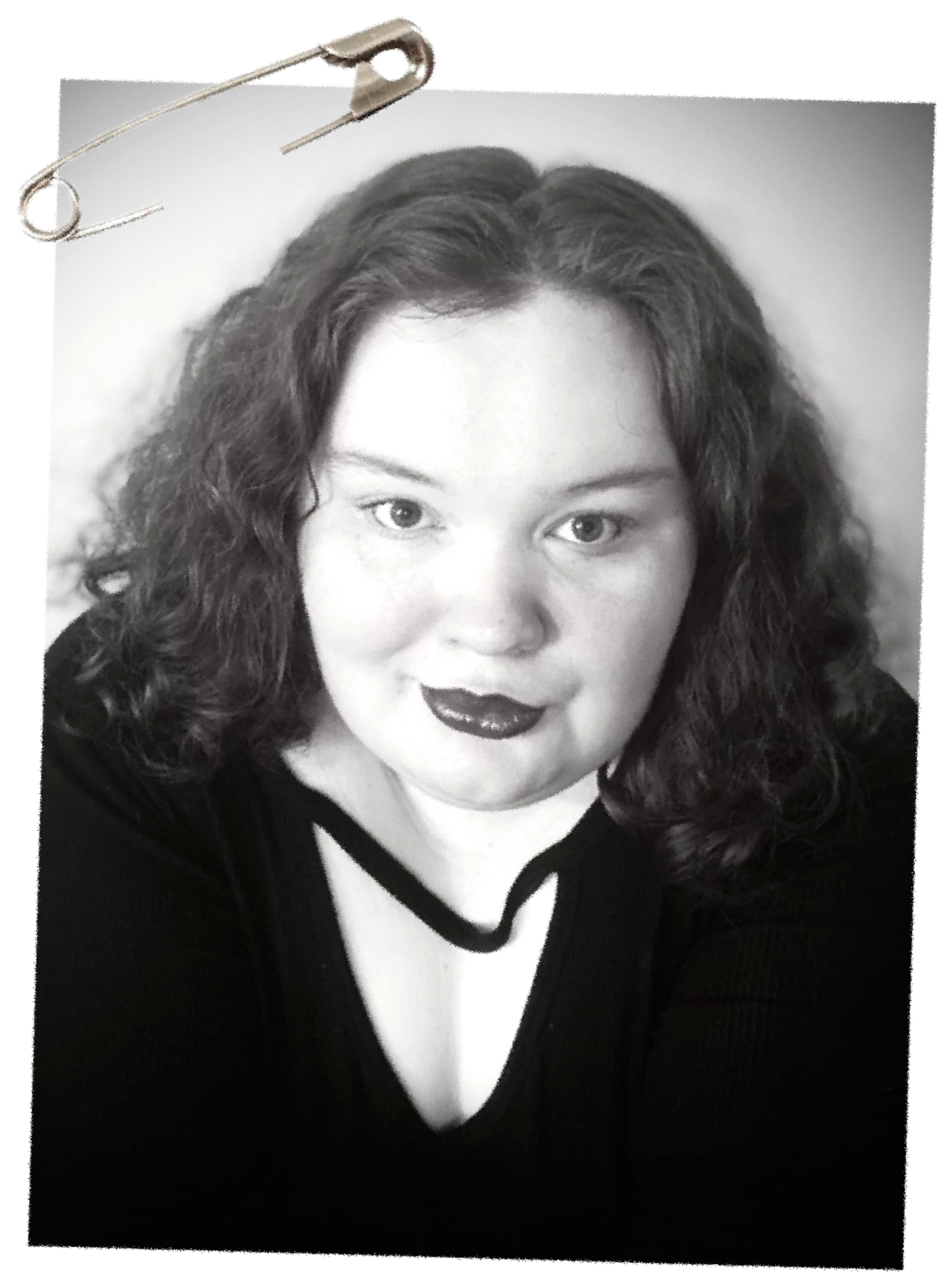
Finnialla (Finn-all-uh) is a perpetually tired writer and artist. They got their BFA from an art school like an idiot. Since college, they have found work as a staff writer for the Incognito Press, Outlander Magazine, and Democratic Left. They also started PULP lit mag in 2024 and have been published in multiple indie magazines for their poetry. When they aren’t writing, you can usually find them hanging out in a trash can or fighting raccoons for dominance in a Denny’s parking lot. If you want to reach out, you can find them on their website, https://finn-all-uh.org/ or check out their Twitter for weird hyperfixations and 2 am shitty ramblings, (@finnalluh). They stopped biting people, mostly.
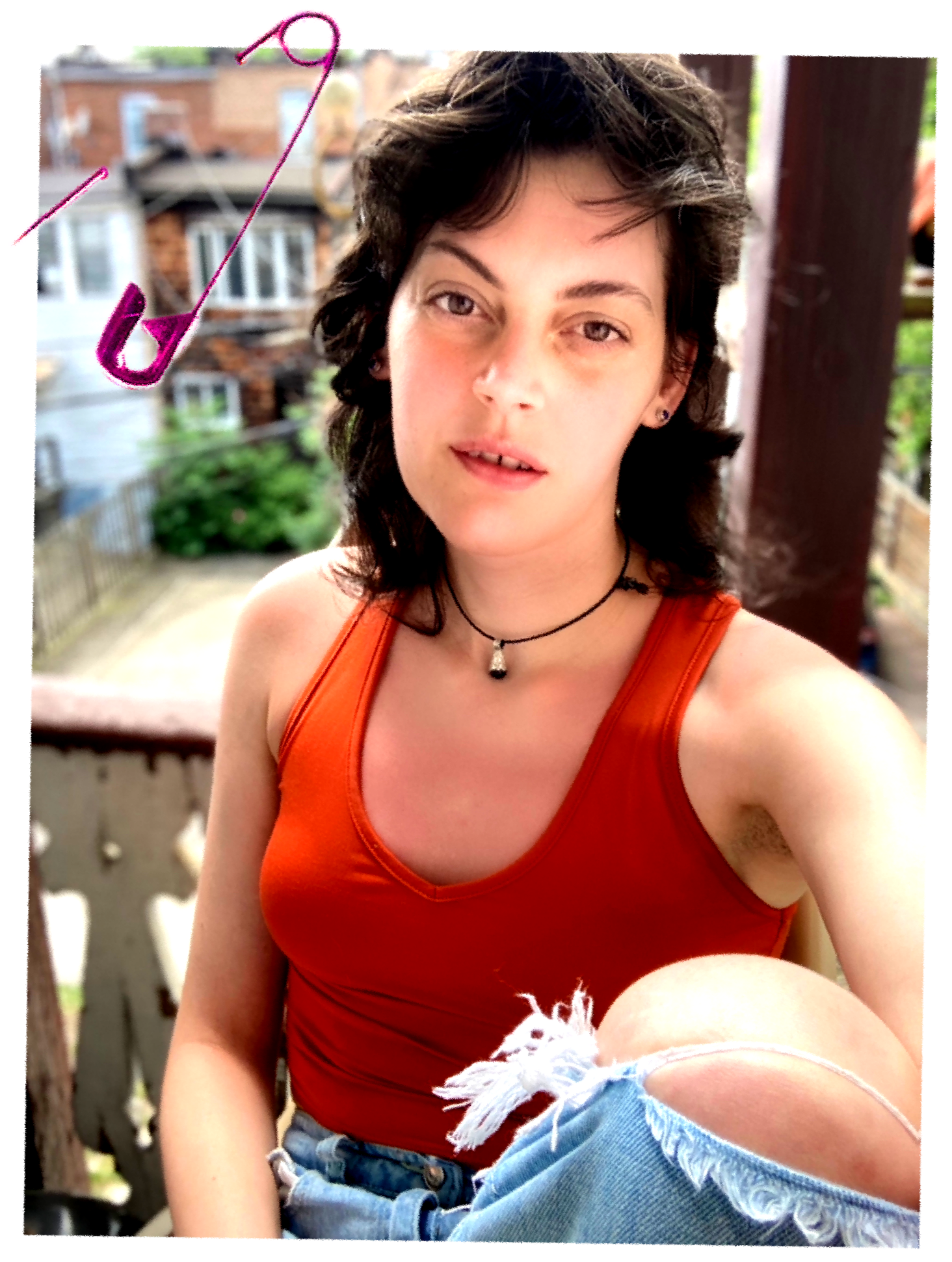
Cleo Varra is a Baltimore-based poet and the editor of the zine The Occult Digest. You can read her work at memoriesoferasure.com and on Instagram: @cleovarra.

Gargi, originally from Mumbai, India, currently resides in Abu Dhabi, United Arab Emirates. She is fluent in English and Hindi. A high school senior in Abu Dhabi, she is currently studying Psychology. Gargi has had her poems published in the Writer’s Pocket anthology (Radiance and The Silver Linings). She enjoys reading fiction and thriller books, writing poems and drafts (many of which are tucked away in her Google Docs), and discovering new songs or artists. Her music taste leans toward The Arctic Monkeys and The Neighbourhood. Beyond poetry and prose, Gargi sings as a hobby and is also a talented scriptwriter.
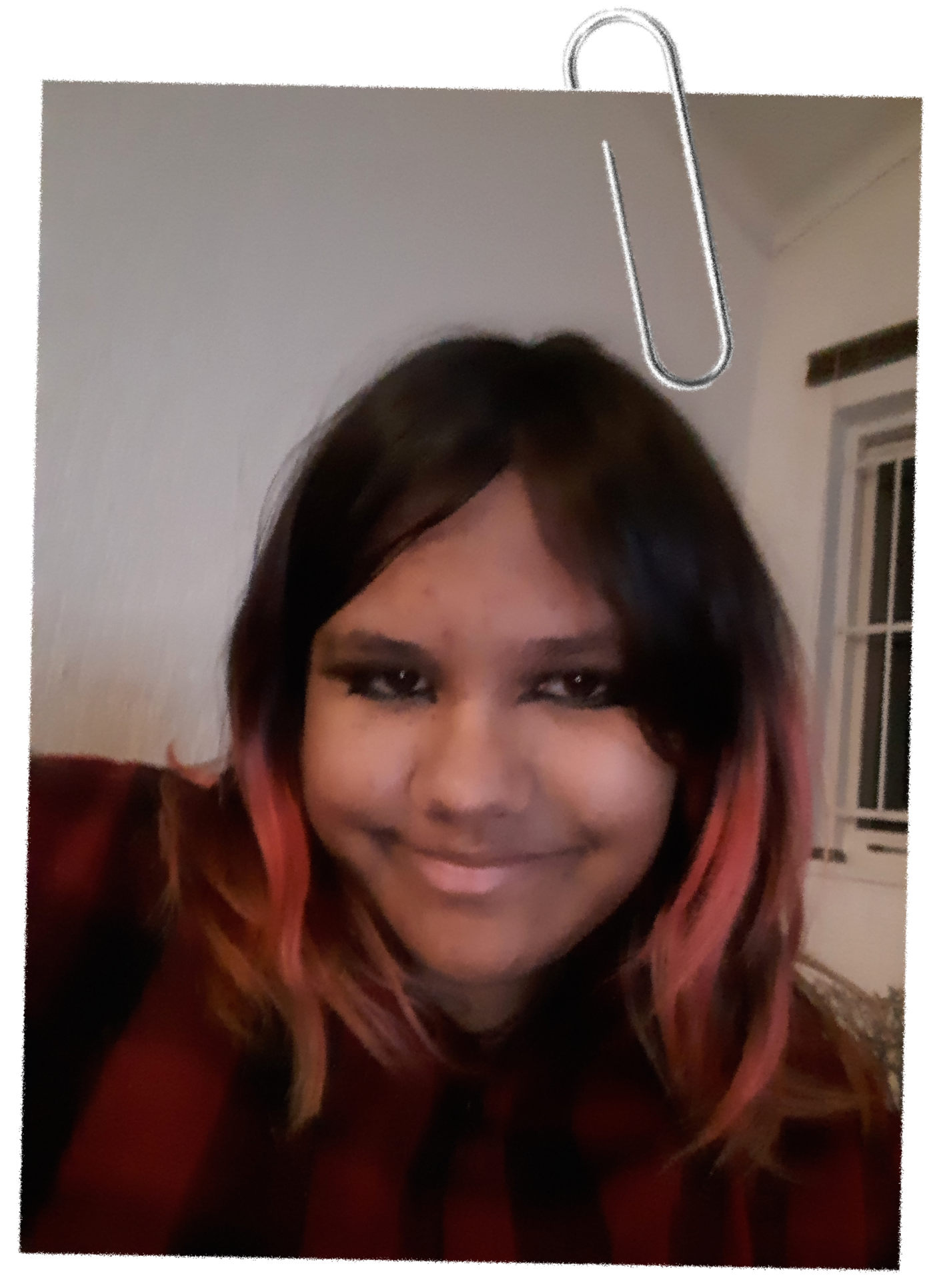
A 15-year-old word activist and storyteller passionate about amplifying marginalized voices and sparking social change through writing. As a poet, short story writer, essayist, and artist, Surya explores the intersections of identity, queerness, and radical love. Their work is a testament to the power of language to heal, provoke, and unite. They're dedicated to creating inclusive, unapologetic, and beautifully crafted stories that reflect the complexity and diversity of our world.
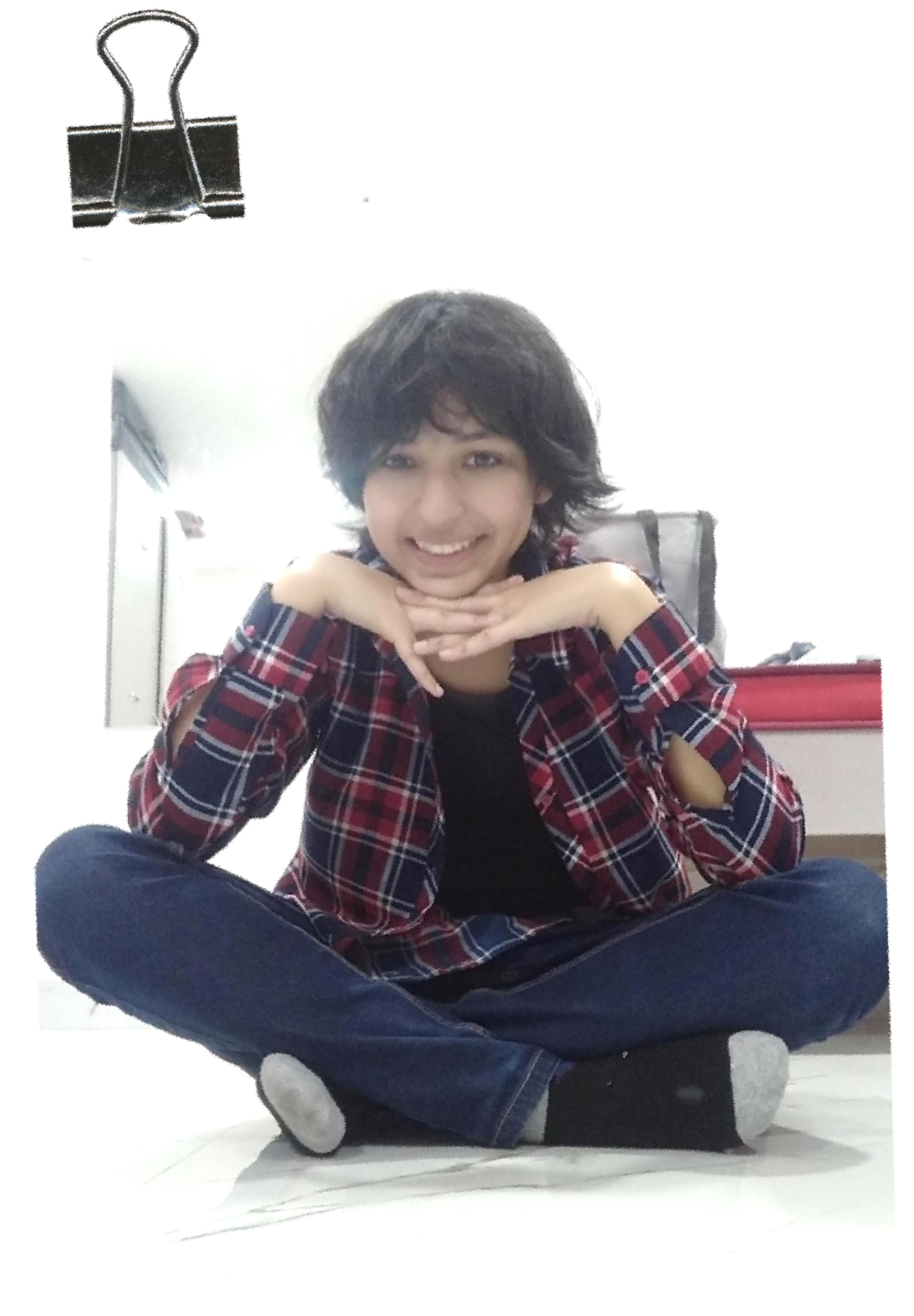
Raj is that forest witch who is friends with a dozen different animals, and regularly talks to the Moon.
She finds joy in a strong cup of coffee, a good pun, and the changing hues of the sky through the day.
She is a little bit Say Yes to Heaven and a little bit Arsonist's Lullaby, and ardently hopes that life never stops surprising her.
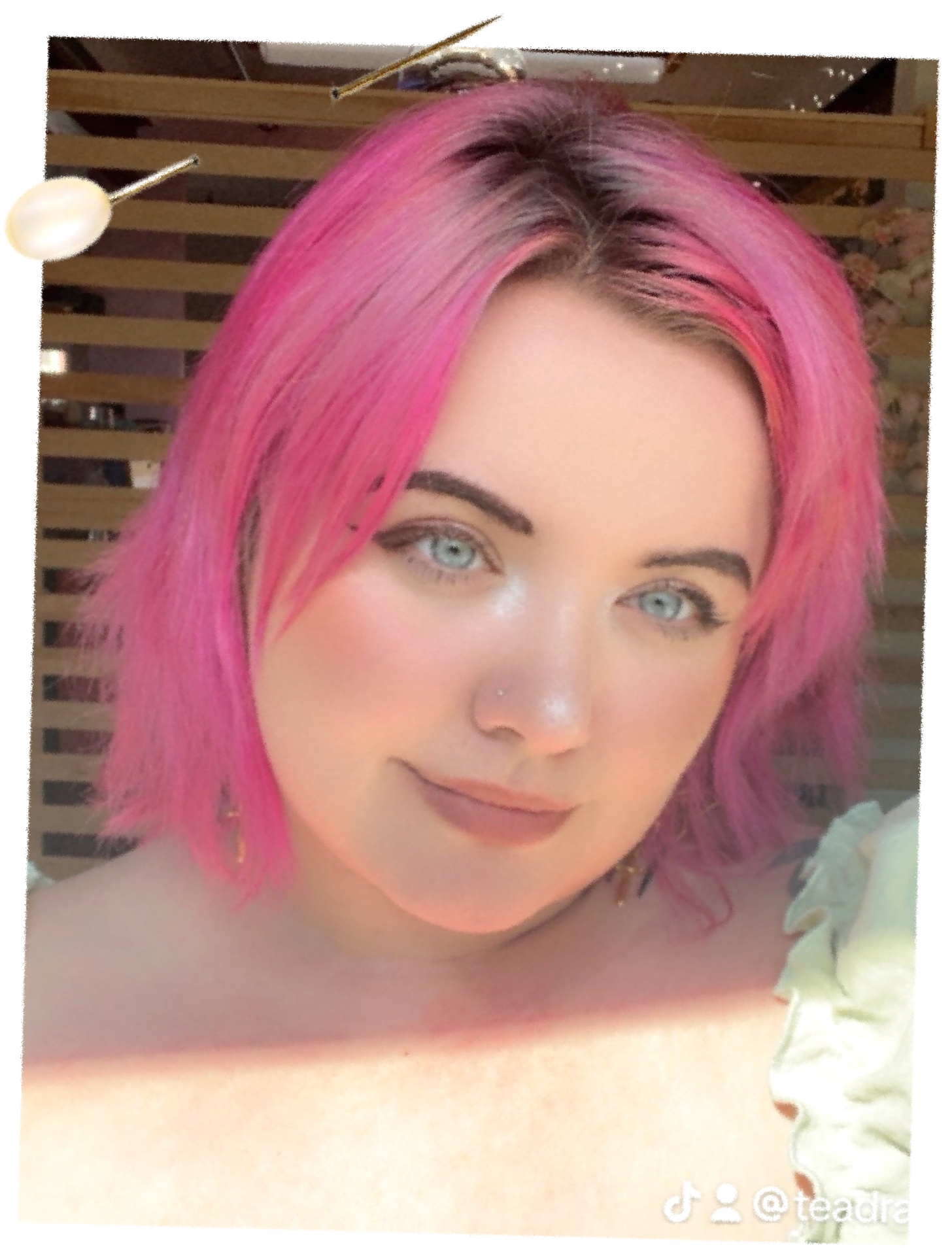
Kenna DeValor (they/them/theirs) is a glittering mythical creature that rose from sea foam and has been terrorizing the nearby town’s citizens ever since. (Just kidding!) Kenna is a queer and nonbinary writer that hails from pothole-adorned paradise: Bethlehem, PA and has been published over 50+ times in 2024 alone. As far as education, they are an alumni of Lehigh Valley Charter High School of the Arts (2017) and currently a senior English/Creative Writing undergrad student at Bloomsburg University (2025), and when not writing, reading, or working as an intern on a startup app, Kenna is a professional tattoo artist and the EIC/Founder of the lit-arts magazine FlowerMouth Press.
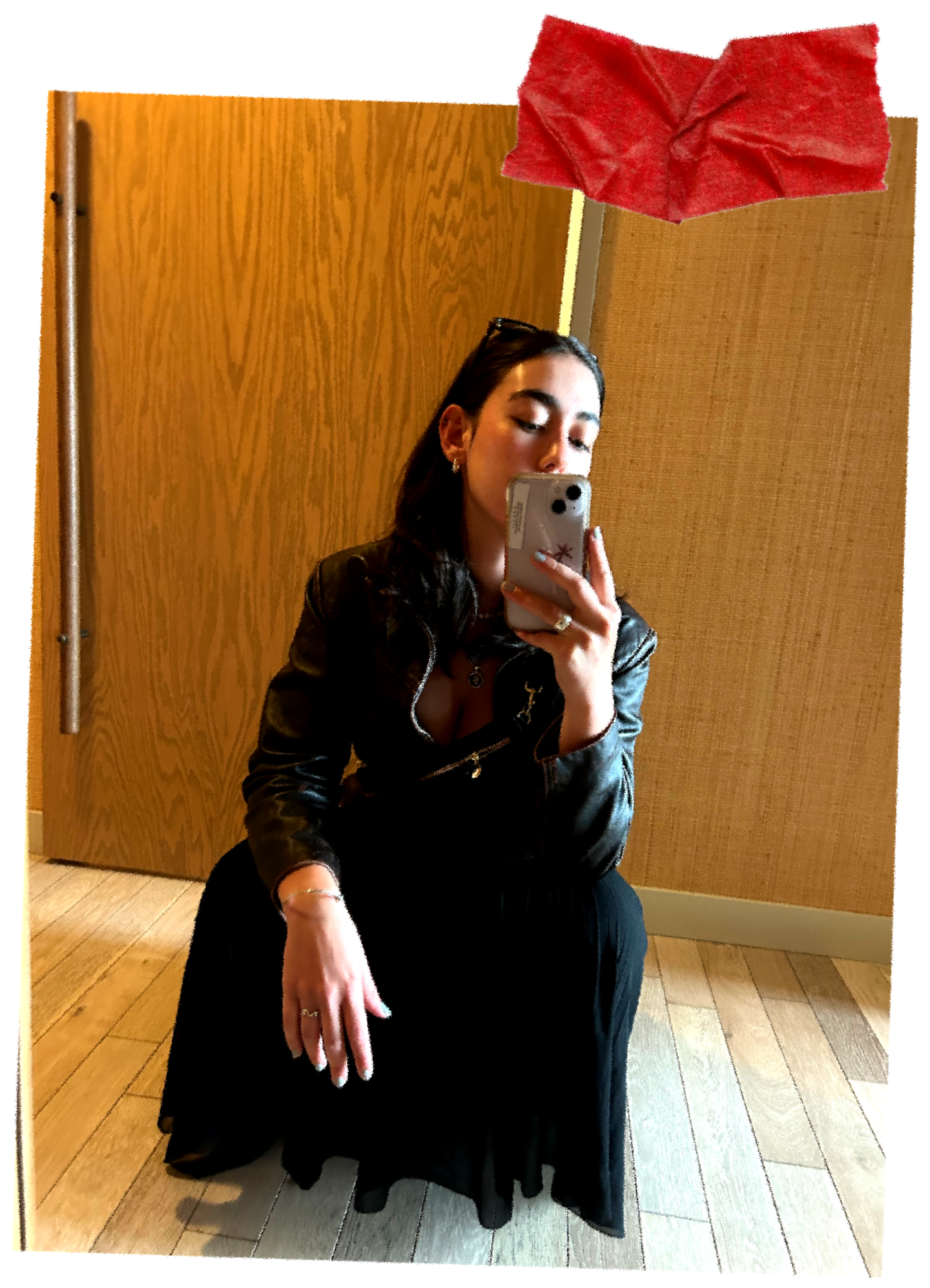
E.P.Hughes (she/they) is a young queer writer and winner of a Scholastic Gold Key and Creative Youth Writing Award, as well as a writer for the DICED and Vellichor magazines. Though an alleged poet, she is also a Greek and Chinese-Malay activist with a powerful lust for life, which she expresses through cooking and baking fusion food, reading as much as she can (especially Baldwin, Tartt, Kafka, and Camus), and advocating for leftist politics. If she’s not writing, cooking, or advocating, you can find her planning activities for her high school’s GSA, researching random topics (the most recent was greenland sharks), or boxing at her local gym. Her favorite bands are the Arctic Monkeys, Bauhaus, Joy Division, and the Clash (which she listens to near constantly), and her mbti is ENTJ-A (she’s also a Capricorn if y’all care). You can find her writing and random status updates at her professional instagram @e.p.hughes_alleged writer .

Mouli Sharma is a postgraduate student at Jamia Milia Islamia, and a freelance illustrator and writer from New Delhi, India. She is a journalism graduate, a published photojournalist & illustrator, having been featured in The Hindu College Gazette, & the quarterly Pink Disco. She currently serves as the editor of the student-run news site, The Voice Express, & of course, as an editor for The Queer Gaze.
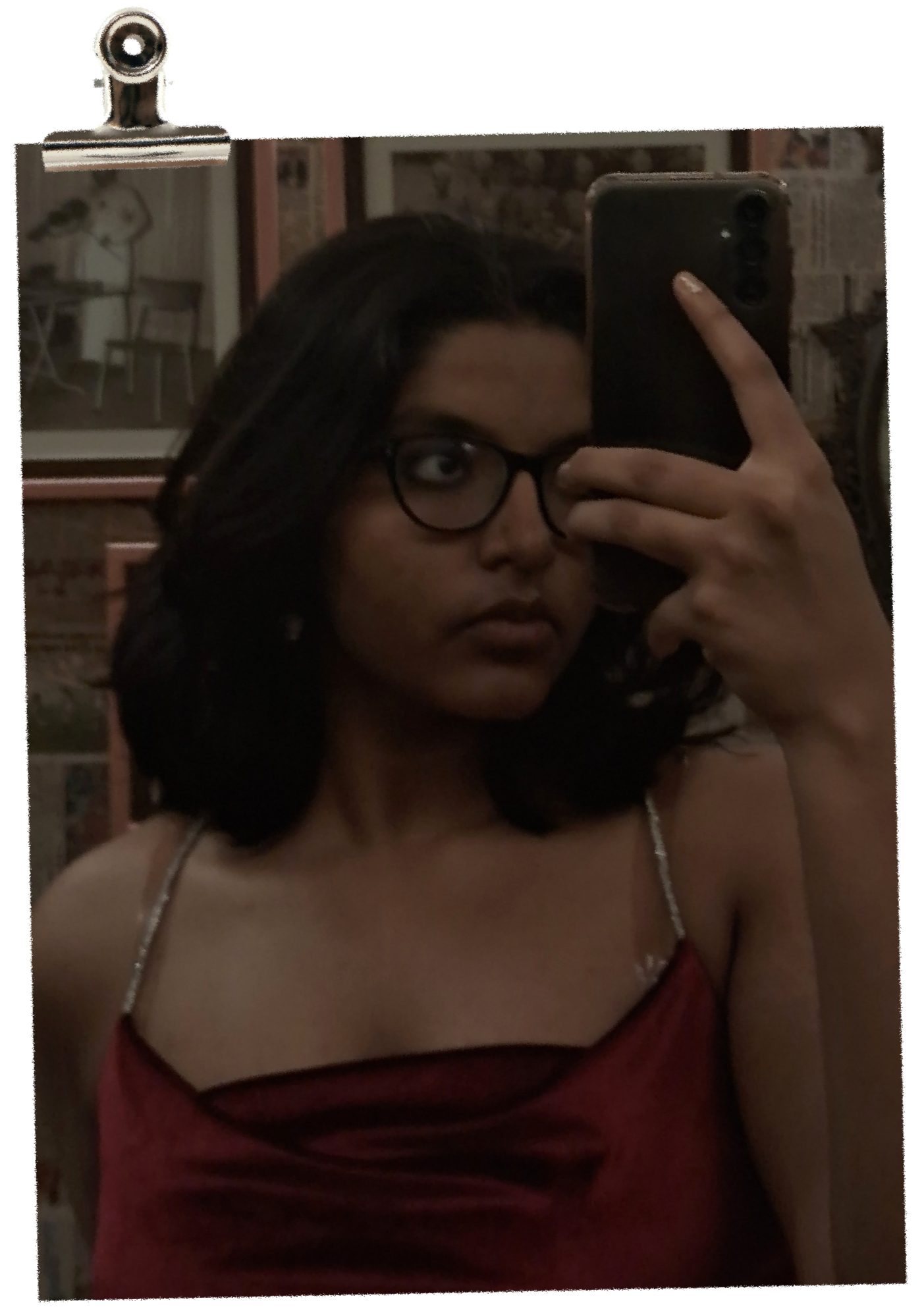
Gunakkshi is a queer Indian girl who grew up trying to breathe life into the stories and poems she called home. When she found out that she could do things to words that made them trap life within them, she never stopped. She believes that her writing is of little use if it does not resemble a mirror of some kind. Other than literature, her interests are politics, fashion, pop culture, cinema, and taking pictures of the sky. The only thing she doesn't have a strong opinion about is her favourite ice-cream flavour (they’re all excellent, she says).
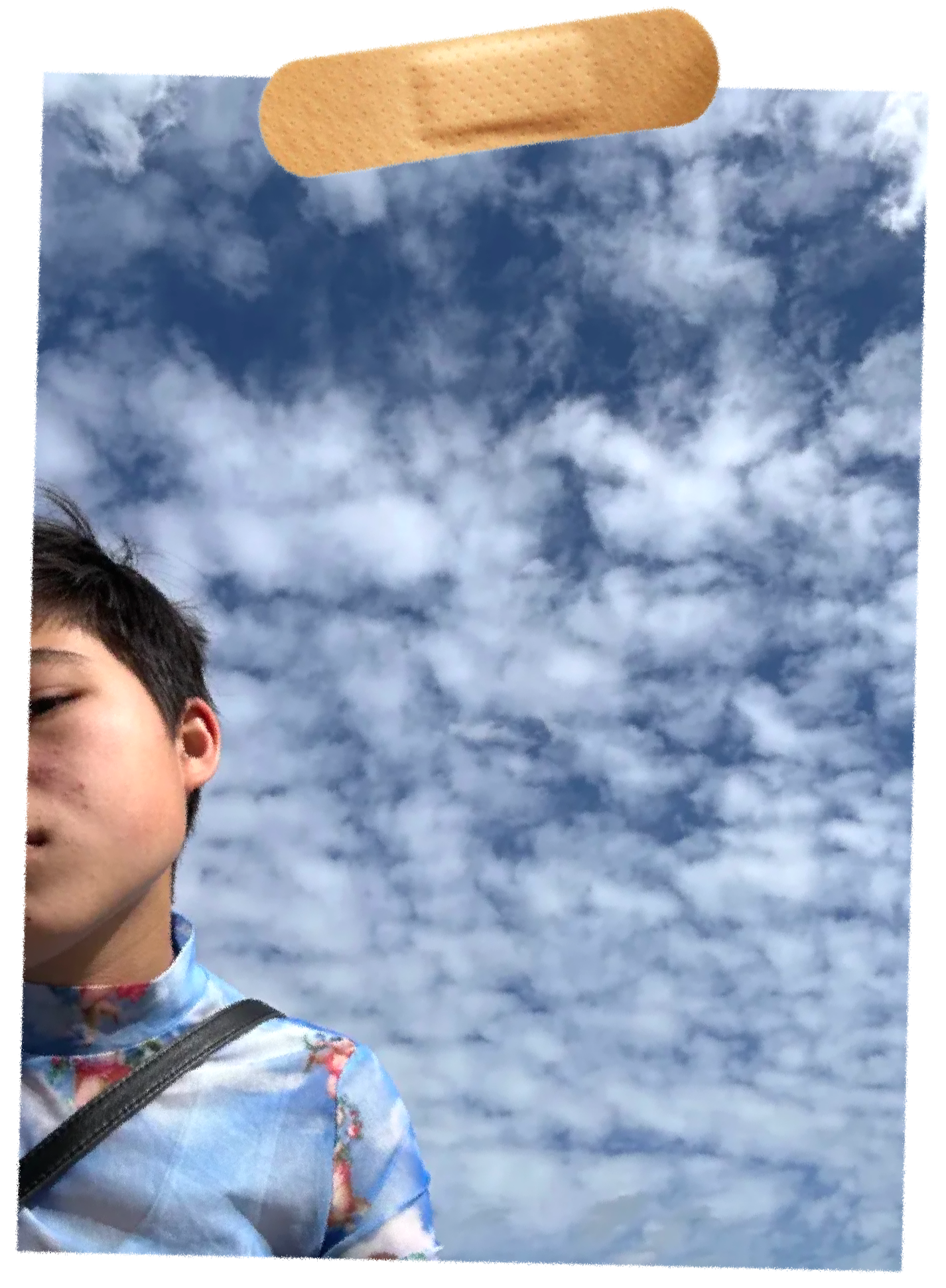
Jasper is a trans and queer writer from California. He is currently a senior in high school with an interest in writing and publishing. He has been described as "eccentric" a worrying amount of times. He's a fan of Sherlock Holmes, literary fiction, blue jeans, Bikini Kill, and every piece of transgender art he can find.
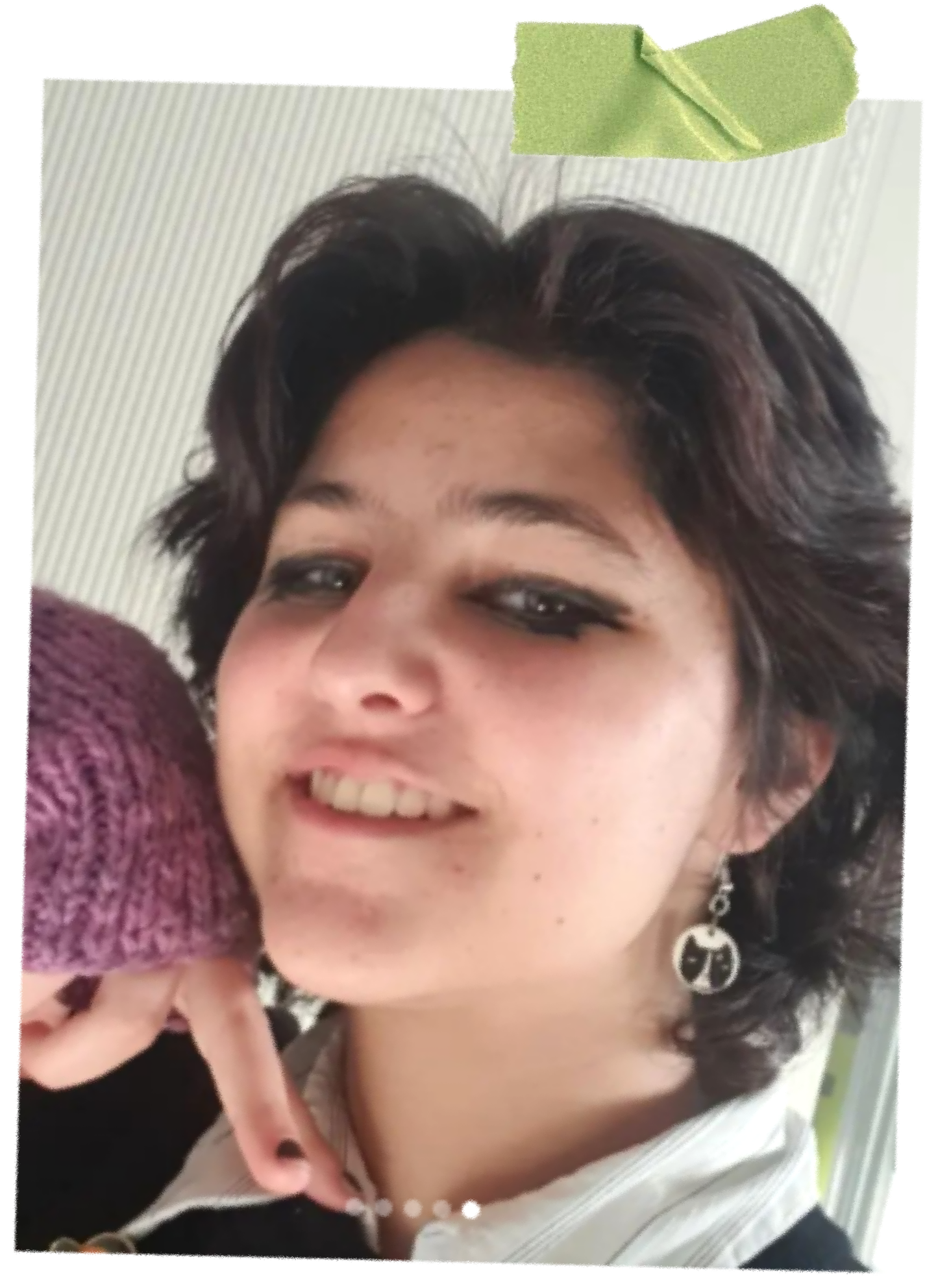
Rio is someone who thrives on creativity, constantly engaging in various forms of artistic expression. As a musician, artist, and writer, Rio is always in the process of making something new. A lover of horror audio dramas, Rio finds inspiration in the eerie and unsettling. Having grown up attending a Jewish day school, Rio possesses a deep understanding of religion and its intersectionality with queerness, which often influences their work.



the past got it wrong — you grab the balls with queer revolt

In the brand-new show of HBO ‘Fantasmas’, Julio Torres slices through reality with the absurdism of bizarre. Stitching a poetic spin to some of the social mundanities, he addresses specific snapshots of our 21st century lives and transforms them into a kaleidoscopic fever dream. In one of the scenes, Torres opens a fabulous, queer-oriented perspective into the standard alphabet arrangement. He expounds on the existence of the letter Q; a rambling that initially assumed nonsensicality, but began to branch into a philosophical query of the letter’s (Q) singular existence on the alphabet. He questions why the letter Q comes up way too early before being conjoined to its avant-garde siblings X, Y, Z. He imposes on the idea that it should be on the back alongside with the triumvirate X, Y, Z. Truthful to that poetic prelude, Q didn’t choose itself to be positioned alongside with the other letters. It is a criticism on how social norms deflate the idea of nonconformity. As the monologue of the letter Q expands, it is shown through splices of scenes that no one understands the conundrum of Q in all its punk, anarchy, and abstraction. All the alphabets were easy to address, understand, and make sense of. Q stood out with a stylish dash on its lower curvature, highlighting a sense of identity. They even exclaimed, “You know what, I am proud to be niche. I don’t care.”Dissecting Q as a letter, it means subversion from what is expected. Perhaps, tossing away the formal etymology of the word queer, it would be a probable mythology on how it started as a distinctive letter Q. The genius meta-irony of Q’s storyline lies in its satirical wink to reality. Society is constructed with norms that merit us if we follow them, and sometimes, those norms are blatantly twisted to carve and jut out the misfits. O could damn Q, insult it with the question of their difference only having a stick between their legs, but does the difference between the two even matter if the treatment is already predetermined to be unjust at the end? Q might have started an inquiry into the depths of how our society is built. Q is the trailblazer, the bold meteor that began the radical movement for X, Y, Z’s empowerment. Q was the weird sound of a screeching melody, always ra-ra-ra in their colorful fangs and claws. Q was never bought, because they were never meant to be commodified into the jaws of neoliberalism. No one understood what they were selling because they were the market of their own. Q never paid the bills because they weren’t subscribed to the reversible impoverishment of money. X, Y, Z strut under the city lights and through the mouth of streets, but Q paved the fire that burned past oppressive systems. X, Y, Z shattered the rules, but Q made the strong cages look brittle. The injustice to Q is a shrine for Queer Gaze. Q is the capital of this magazine, its leader, its star, its deus ex machina. Q is the beginning of Queer Gaze, and just like all expositions, they set the entire show, but what lies behind the curtains?

In its own moxie, the history of the magazine claws into the entrench of a personal wound. In the abyss of that wound is a crackle of glitter and clenched desire to provoke. The Queer Gaze was conceived out of necessity. It was not meant to be a literary publication; its original purpose was to be a journalistic escape from the conformity of narratives.During my first year, I submitted a literary piece as an application for the official publication operating within the university. The story was about a transwoman hustling in the nineties as a prostitute. With its friendly language and censored scenes, I was confident that it would cut through the sea of great works. Truthful to my own prophecy, the piece successfully passed the first screening. In the second test, all of us as succeeding candidates were interviewed. Their question to me was: What is it that you want to write? Without a falter in my voice, I answered with bravado that I have the fiery need to be political with my stories, to divulge, to dissect, and to reveal the vulnerable moments about queer lives, and hike that vulnerability out to show the not-so-beautiful realities of queer identities. One of the interviewees looked at me with disdain. To emphasize more of their contempt, they harrumphed and shook their head. I knew then that my answer failed, and my ticket to entrance coiled into the fire of rejection, shriveling away into dust.I did not confront the publication about the reason, because it was already enough of a humiliating punch. I did not ponder, I did not question, I did not look further. But weeks later, I would overhear from one of the editorial staffs within the publication that there is an ongoing political bias among the advisees. That political incorrectness was seeping into articles being proposed and procured by the writers, and certain elements of liberal opinions, including speaking up for LGBTQIA+ community and other sociopolitical issues of the underrepresented, were being discouraged to pen.As I was still nursing my emotions of rejection, something glittery fractured. It gained momentum until it catapulted into a shrapnel of colors. My literary need to express frictionized against what I learned. From that journalistic climate of political repression, the fire in me was already starting to become a conflagration. Stark with rage and seething in disappointment, I went into my art archives and collaged a Frankenstein-esque logo of the magazine. In the cavernous monstrosity of my need to castrate censorship, I created something disfigured, disjointed, and unconforming, yet in its dadaism quality, its abstraction translated an unapologetic beauty, and it dawned a realization that it was the essence of ‘gazing from a queer lens.’ So, at its heart, The Queer Gaze magazine is what Mary Shelley would call her first novel ‘Frankenstein’ as a masterpiece. It is a magazine that splinters against the conventions; it sours against the recycled act of silencing spaces that are not grained with noise.To ruminate and glaze over its aesthetic, Queer Gaze is intentionally done messily to evoke the spirit of Grrrrrl Riot period, the punk generation that angrily regressed the oppressive weight of patriarch. Its beauty is manifested as the reimagining of the first brick that was thrown into Stonewall by Marsha P. Johnson. It is a love letter tinted in glitter-explosion and Warholian pop color. In queerness, there is no sanctity of peaceful religion; it is a structure worshiped through rebellion, defiance, and chaos. Queer Gaze’s aesthetic is a love letter to the screeching messiness of queer existence. With its grungy vibes interspersed with psychedelic colors, it is a mirror that every queer kid has held up to themselves, and seeing a reflection of an ill-measured eyeliner, overlined lips, and bad drag makeup. It is a looking glass to the raw, unpolished reality of queer lives juxtaposed with the prismatic decisions to live in accord with their identities. As much as we want to be deliberate with making our aesthetic maximalist and dictatorial with anarchist art, the design is still encumbered with stories of collective journey tightened in the barbed wires of struggles, resistance, and pride. Through our aesthetic, we hope that the readers feel the grit through the ink, but still emerge from the subversiveness of it with a stain of lipstick or taint of party glitter on their sleeves. And in our delible chaos, beauty lies in imperfections. Every smudge, splash of color, and grunge is a badge of authenticity.Looking back now, Issue 1 was a combustible introduction. It was a fuel for delightful possibilities. For the second issue, we are throwing sparks into the nuclear area of the previous issue. We are wringing the gates open for experimental literary works that tear apart the glossy, commercialized propaganda of oppressive gender constructs. We want to see words that rain bullet acids, burning shallow ideas of queer identities. We want to fiddle with the unruly and yank it into the revolutionary, hoping it tramples the hate. We expect submissions that spit on the binary, that smears questions and vandalizes the traditional gender norms. Either with artful grace or ferocity, we seek pieces that are fluid, dynamic, and subversive as the concept of trouble – stories, poems, art, and media that capture the essence of gender as unlimiting, unrestrained, and unshackled to a label. We want to see works refracting into spectrum. We want our contributors to push the boundaries, to seize the unexpectedness of chaos, and to give voice to experiences defying categorization. In the remnants of the idea of defiance, we curated the theme ‘Gender Trouble’ as resonating as it is radically confusing, and the way it questions a lot about the systematic structures of gender is its seduction, its appeal, its etherealness.Gender Trouble embodies the core of our existence – living and thriving in the spaces between. When I was looking for a nonfiction work for an academic paper that I was writing, I could not find an author that really expounded on the exponential experience of the in-between. Queerness is not linear; it is a spectrum, but how is this spectrum being navigated? When I posed the question to my professor, she recommended Judith Butler. Upon browsing her catalog of work, I shelved out ‘Gender Trouble’ for its complicated premise. Trailing through the verbosity of her arguments and philosophies, I needed time to soak them in, and once the learnings were in-motion, I tried to deconstruct some of the complex ideas. In her seminal work, she was able to avert away from the cliché flouts of gender identity, and instead challenged the very foundations of gender. She questioned the archetype of binaries, its structure and how it defines the identities we perform throughout our lives. She argues that gender is not fixed or innate. It is a performance. An act. An expression shaped by what society expects of us. This radicalism of gender idea comprises fluidity and the performative aspect of our theme. When I introduced the idea to my team, it ended into an intellectual discussion with anecdotes of our personal lives being used as an exemplification. That is when ‘Gender Trouble’ took its atomic form as an idea, and subliminally morphed into the substance of Issue Two’s theme. It reflects our collective ethos and it is an invitation to others to join us in further questioning the binary. We believe in the power of subversive art and literature as tools to dismantle oppressive structures, and sprout new, inclusive narratives. By Butler’s emphasis on the interconnectedness of gender, sexuality, and power dynamics, it aligns with our mission to uplift marginalized voices and to challenge hegemonic structures. Butler’s deconstruction of identity as unified and stable is like a spotlight of our vision to unearth the multiplicity and fluidity of selfhood. In its wholeness, Gender Trouble is a powerful middle finger against supreme systems that has always dictated the roles we need to fill. It is a sparkly eye roll against the glares of patriarchy that want to separate identities into rigid binaries. It is our way of splashing neon against the repressive darkness, it is a glamorous act to disrupt paradigms that are normative. We speak for the celebration of queer existence.

Queer Gaze is the rainbowy amalgamation of various queer icons and rebellious punks that paved the way for us. It is a centrifugal force that snatched real life experiences from different queer perspectives, inerting it into a universal force of love and inclusion. Those queens, kings, and in-betweens that dared to live authentically despite the society’s unnecessary attempt to stifle their voices – Queer Gaze pays you a homage. From the fierce ballrooms of ‘Paris is Burning’ to the modern-day heroes wearing platform stripper heels, drag legends like Sasha Velour, Sasha Colby, Latrice Royale, and so much more, I drew inspiration from those who didn’t turn inwards from the boulder weight of their pain, but rather to those who molded their pain into power, art, and activism. Queer Gaze is a tribute to them, a continuation of their legacy, and a spotlight for the future generations. In the spirit of defiance and creativity, one icon that pulses in the vein of this magazine is Divine, with her glamorous filthiness and fearless self-expressionism, she has ravaged the loudness of our voice -- snatching the megaphone of hesitancy and rattling it into the brave echoes of the unsubdued. In the blinking and unblinking of screen, Divine’s audaciousness and gigantic presence showed us the freedom and acid-rush of embracing oddity and the animalistic beauty of being provocative. Snapshots of the underground ballroom culture have also been the elixir of our magazine. The resilience mingled with the height of fashion in these spaces – they all confirm one thing about queer people: throw them anything ugly and they will transform it into a gorgeous piece of resistance. The ballroom spaces have always been the place where marginalized queer people glue their identity, form alliances with their chosen family, and scream through the inner pain in the form of art. The iconic Marsha P. Johnson, a pivotal figure in the Stonewall uprising and a fierce activist for LGBTQ+ reminds us that fighting for our community can transcend into historical revolution, changing string of lives for progress. Intersecting into the mosaic mottled allure of religion, the stories of Saint Sebastian has become the faith of this magazine. Revered by queer people as an iconography of strength and resilience against persecution, his dilemma streamlines outside borders, flapping in the monarch wings of the Paper Dolls in the Philippines – transwomen who formed a tight-knit community while facing adversity in a political climate that was despotic. One saint, and the other a community – they are symbiotic illustration of the enduring power of solidarity.These people, these marginal spaces, these tragedies, these voices – they all converge as the backbone of Queer Gaze. By honoring these trailblazers, the Queer Gaze hopes to inspire multigenerations to continue fighting for visibility, equality, and acceptance.

⋆.˚.𖥔˚ about the author ⋆.˚ ᡣ𖥔˚
Dan Aries is a twenty-year-old transnonbinary individual who longs for the city at heart. Born and raised in the Philippines, she is serious about writing and is histrionically in love with gossip, art, fashion, and the universe’s mysteries. Young as they may be, she has a fierce heart for intersectional feminism and inclusivity. If she is not writing or studying, Aries is probably just holed up in her room, watching drag makeup tutorials while feeling the fantasy with a mink coat.
Dungeons, Dragons, and Queerness Exploration
by Leslie Hernandez

You might be wondering how exactly Dungeons & Dragons (D&D) relates to the exploration of queerness. Well, this structured yet open-ended roleplaying game with a fantasy setting can allow a player to explore aspects of their life, including but not limited to their sexuality and gender identity, in a safe space. People can take this route because they might be too scared or shy to explore them in their real life, or they might not be in a safe environment to do so.

The first and arguably most important step in D&D is to get to know your party. The party being the group of people you will be playing with. Getting to know them can give you a sense for whether this could be a safe space for your exploration through your character. The D&D community is a very accepting and LGBTQ+ friendly place, but it is always smart to get to know your fellow players before accidentally putting yourself in an unsafe situation. The Dungeon Master (DM) is usually one of the first people you have contact with, so you can let them know your intentions and have an important conversation with them. This conversation regarding your exploration can happen before anything is finalized or when presenting your character to the DM.

The most fun step, in my humble opinion, is creating your character! Here you can go wild; there’s so many classes, sub-classes and races that anything and everything can be created—from a drag king halfling bard that performs in taverns every night and uses his sickening moves to demolish his enemies, to a trans woman dwarf paladin with broken oaths to gods who betrayed her trust. Even a lesbian elf rogue who rebels against the strict traditions of her home to be with her beloved is a possibility of a character that can be played. These are just some examples; the possibilities are truly endless.Then, the exploration part comes into play as the campaign unravels. Character dynamics become clearer, and with proper conversations beforehand, even romances between players’ characters or a player’s character and a non-playable character (NPC) may bloom. Situations may also be presented where your character gets to talk about their gender identity, and you as the player can take these opportunities to express your own thoughts, doubts or even experiences in a safe environment.I know all of this from my own experiences playing D&D in the last three years. I had always had an interest in the game, curiosity and fascination causing me to bring it up any time someone mentioned how they liked fantasy. I struck gold when I met my best friend, someone as interested and fascinated with D&D as I was. We talked on and off about being interested in joining a party somehow, and if the opportunity ever came we would do so together. Then, one random day he invited me to a brand new campaign that he would be DMing. He gave me all the information I needed to know and then sent me on my merry way to create a character.I began creating my beloved Ianonia, a bisexual tiefling rogue with a typical tragic backstory. By this point in my life, I had gone through my chaotic journey with understanding and accepting my sexuality so I, of course, made my character bisexual. Yet, as many of us know, after the sexuality crisis comes the gender crisis. That is where I found myself, a bit confused and lost as to what exactly my gender was but scared to explore by myself in a place where I could face pushback from the world around me, So, I took the chance to explore through Ianonia. I gave her she/they pronouns and declared them to be nonbinary. I took this chance as I knew the party was entirely composed of members of the LGBTQ+ community and fierce allies. I never made my intention of exploring this gender identity for myself through the character explicitly clear, but alas, my DM clocked me the moment I presented Ianonia to him.What came after that? A safe space to explore my gender identity in a fantasy setting. While I got to have a sense of how it felt to be referred to via she/they pronouns, Ianonia got to kick ass and take names. As time went on, I slowly became comfortable enough to let my closest friends and family members know that I identify myself as a nonbinary person (demigirl to be more specific), who uses she/they pronouns.D&D provided me with a safe place to explore myself while also spending time with others, throwing out of the window my need to constantly conceal my true self. I encourage others to do the same if they have the opportunity, but to heed my advice of making sure it is a safe space to do so.

⋆.˚.𖥔˚ about the author ⋆.˚ ᡣ𖥔˚
Leslie Hernández Cruz (she/her) is a current English undergrad student at the University of Puerto Rico. She’s a writer and aspiring author who spends most of her free time honing her craft. The rest of her free time is spent reading and going out with friends and family. She’s also part of the staff of Bardics Anonymous, FlowerMouth Press and Unheard Stories Lit Mag.
‘Carnival of Souls’ is a Queer Classic. Prove Me Wrong.
by Cleo Varra

“Carnival of Souls” is a B-movie classic from 1962. It was made by two industrial filmmakers who had seen the early imports of Ingmar Bergman films and decided to make something that was as atmospheric, as taut and minimalistic— but then did so with skills honed via 1950s-era educational socialdrama shorts. It’s a damn good ghost story, and — I deeply believe — a piercing analogy for queer life in midcentury America.

The film opens with its protagonist, Mary, drag racing with two of her female friends against a rival car of boys. They have a good head start on the fellows, until they crash off a bridge into a river. Mary is apparently the only survivor. Soon, she’s back to her normal life: playing eerie tunes as a solitary-minded church organist. It’s on her way to Utah, accepting a new church organist position, that she first sees “The Man” — a ghoulish figure in fabulous makeup, who materializes in order to gaze at her blankly through the passenger side window. He appears again on the road in front of her – doing nothing in particular, just standing in his dark, smoky eyeliner – and causes her to run off the road once more. Still: it has to be said that the biggest pests around her are, without fail, fully living human beings. Namely, we have the insufferable Mr. Linden — her neighbor in the apartment across the hall, who will not stop asking Mary for a date, leering and licking his lips as she puts on her bathrobe. “You’re going to need me in the evening too,” he promises. “You just don’t know it yet.” “I can’t accept,” says Mary, flatly. Indeed, she cannot: because when she rethinks her refusal, and goes across the hall to knock on Linden’s door, a mysterious force prevents her from performing this heterosexual act — a mysterious force in the shape of The Eyeliner Man! What is a girl to do?Much more intriguing to Mary than Mr. Linden is the pavilion on the edge of town: an old bathhouse that was made into a dancehall before falling into disrepair and eventual dereliction. Now all that remains within are charming party decorations, fluttering gently in the sea breeze. “What attraction could there be for you out there?” asks a priest, who notices Mary’s interest in the place. “The law has placed it off limits.” “I’m not sure,” she replies – “I’m a reasonable person”; yet the forbidden dancehall seems to be calling to her, ineluctably; and, after the killjoy priest convinces her to leave without visiting it, The Eyeliner Man again appears in the pavilion’s window, sadly lowering his head as she drives away. Don’t worry, my guy; I have a feeling that she’ll come around eventually.As Mary is in town shopping for dresses, she has a strange episode: the camera goes all wavy, and suddenly, it is as if the people around her are incapable of acknowledging her presence. Talk about invisibility! Shoppers bustle through the clothing racks, thoroughly ignoring her as she hovers behind them anxiously: “What’s the matter with everyone? Why don’t they answer me?” Just as quickly, the spell is broken, and – fortunately or unfortunately – a distraught Mary is approached by a passing psychologist, who diagnoses her as having “had a fright”, and offers to see her in his office immediately. What, no waitlist? The past really was utopia.In his office, Mary explains: “It was as though for a time I didn’t exist.” She looks off into the distance. “As though I had no place in the world, no part in the life around me.” Babe, you just gotta find your tribe. The psychologist asks: “Anything else? Anything you… haven’t told me?” He presses her: “Do you have a boyfriend, here, or back home?” “No!” cries Mary in disgust, “and I have no desire for one.” The psychologist is intrigued: “Never?” “No,” Mary says again. “I’m surprised to find myself saying that, but it’s true.” The psychologist leans in; he’s onto something. “Have you always felt this way? Don’t you want to join in the things that other people do, share the experience of other people?” Yawn. Mary answers: “I don’t seem capable of being very close to people.” “Do you feel guilty?” asks the psychologist, and suggests that maybe The Eyeliner Man represents a guilt feeling. “Oh,” snaps Mary, “that’s ridiculous!”But ghastly Mr. Linden from across the hall seems to be picking up on a similar vibe. “What?” he asks, “are you afraid of men? You seem kind of cold.” But I wouldn’t say that Mary seems cold: rather, she’s interested in entirely different things – things like playing the film’s creepy theme music, barefoot at the church organ, while fantasizing about the pavilion and glancing around at the stained-glass windows that read, “cast out devils”. It is night, and a whole host of fabulously made-up, smoky-eyed dancers are emerging from the waters around the pavilion, to twirl and twirl among the shimmering party decorations. Mary can’t keep her mind off of them. Eventually, the tiresome priest intervenes again, looking scandalized as he clamps her hands down on top of the organ keys. “Profane!” he cries. “Sacrilege! What are you playing in this church? Have you no respect? Do you feel no reverence? I feel sorry for you. And your lack of soul.” Um, have they never heard the phrase “open and affirming”? Apparently not: the priest fires her on the spot, then calls after Mary as she sadly gathers up her book of Great Organ Classics: “This does not mean that I am abandoning you, nor should you turn your back on the church. There is help here, and I urge you to accept it.” Yeah yeah yeah, go fall off a bridge, why don’t you?Mary’s day isn’t over yet: outside of the church, creep supreme Mr. Linden is waiting impatiently for the dinner date that she has finally promised him. At the straightest bar in town, music blasts from the jukebox as Mary sits beside him, nursing a glass of water and looking entirely disinterested. “You don’t like to dance,” whines Linden, “and you don’t like to drink, and you don’t like for a man to hold you close: that’s it, isn’t it?” Mary protests: “I didn’t say that!” You didn’t have to, babe; you didn’t have to. Back at the rooming house, Linden continues to neck and paw. She breaks away, and then – what luck! — frightens him out of her room via The Eyeliner Man, who appears in a mirror. Mary screams, and Linden says those magic words: “I’m getting out of here.”This frees her time up nicely. The screen goes wavy again, and again Mary slips into that state of reality in which it is almost “as if [she doesn’t] exist.” She runs and runs through the streets, but there’s no escaping her situation: that she is queer – I mean dead – I mean that, oh my goodness! Mary’s been dead this whole time! Still in desperate denial, she runs onto a waiting Greyhound bus, and is greeted by seats full of heavily made-up, smoky-eyed ghosts, who reach towards her, embracing her. But she’s just not ready to accept the truth. Mary is deep in the ghost closet. “Why can’t anybody hear me?” she wails, pushing through throngs of oblivious normies. In despair, she drives back to – where else? — the abandoned pavilion. The ghosts pop up out of the lake, and, as Mary looks on, begin once more to dance. The Eyeliner Man spies her from across the crowded room, and the camera cuts suddenly to Mary, who is finally wearing the same pancake makeup, dark lip, and smoky eye as her otherworldly comrades. The Eyeliner Man smiles proudly; they waltz, and, as he dips her to the ground, Mary – for the first time in this film – finally smiles. Of course, the film must simultaneously disavow this evident desire for otherness: the camera cuts back to Mary, sans makeup, watching herself; she screams, and tears at her hair in frustration. She makes a dash for the door, but the ghostly partiers won’t let her go so easily. They chase after her. Laughing delightedly, they run through the abandoned boardwalk, popping out from behind wooden columns and briny bushes to greet her every which way. For an instant, Mary appears to be laughing along with them; then she screams once more, and vanishes. Phew. It seems that they finally claimed her for their own.

In using ghostliness as a subtle gloss for Mary’s queer social positioning, “Carnival of Souls” follows in the footsteps of films like 1936’s “Dracula’s Daughter”, which employs vampirism as a paper-thin veil in order to dramatize the titular character’s evident lesbianism. Because how else, in 1962, are you supposed to reference queer traits – seductive forbiddenness; social alienation; disputed existence – without turning to the supernatural as a mournful, fantastically poetical device? I can only hope that in the “Carnival of Souls” sequel, which should be made immediately, our Mary can find more self-acceptance within her ghost identity. Dance on, sister. Dance on.

⋆.˚.𖥔˚ about the author ⋆.˚ ᡣ𖥔˚
Cleo Varra is a Baltimore-based poet and the editor of the zine The Occult Digest. You can read her work at memoriesoferasure.com and on Instagram: @cleovarra.
Queer Horror Movies
by Finnialla Wright

Queer people have been quintessential in cinema since its inception over a hundred years ago, and especially in horror, queers have found their place as villains, storytellers, and connoisseurs of the craft.Since the beginning of film, horror has been a genre that has captivated audiences and brought them into worlds of the unknown, which is something queer people know best. One of the first horror films that still exists in its full form is the silent German picture, Nosferatu. It was released in 1922 to multiple lawsuits by Bram Stoker’s widow for copyright infringement, which she won. Because of that, the German production company that made the movie had to be shut down and all copies of the film were to be destroyed. In Europe, every single copy of the movie was destroyed forever. Little did Bram Stoker’s widow know that one reel had made its way to New York. That reel is the reason we can watch Nosferatu today, and proudly chant gay at the screen, when the two main characters, Hudder and Orlock, grace the screen. And while it’s currently being remade right now, I encourage everyone to watch the original, as it is the purest form of Dracula by Bram Stoker anyone has ever produced.Another reason to watch Nosferatu is because it’s one of the first instances of a queer-coded villain. Just like in the book and the Universal Pictures movie released in 1931, and well, every single retelling of Dracula ever, Bram Stoker’s tale has always been the subject of queer subtext. Bram Stoker, an Irish Catholic who lived in a loveless marriage and spent most of his time in the company of men, did have his fair share of scandals about his sexuality.The trope of queer vampires, a subsect of the queer villain category, appealed to a community with the same sense of nonconformity. It has been used by closeted writers and moviemakers for years to skirt around the overbearing Hays Code and to portray same sex relationships.There’s even the trope of sapphic vampires throughout film history, with such films as Daughter of Dracula, Blood and Roses, Vampyros Lesbos, Nadja, and Jennifer’s Body (although the vampiress is actually a demon in Jennifer’s Body), just to name a few. The lesbian vampire trope comes from an explicit vampire novella that predates Dracula. Carmilla, released in 1872 by Irish author Sheridan Le Fanu, follows an older female vampire preying on young women.Monsters as well, like Frankenstein, also appealed to early queer moviegoers. In the same subsect of feeling different, many closeted queer people found solace in Frankenstein, and even in the Bride of Frankenstein. Just as the monster feels alone in the world, so did queers back in the day, and the monster’s feeling to be loved is a just and familiar one. Queer people resonate with monsters on screen because our peers treat us as such. We see ourselves in the fringes of society, just like the movie monsters of the day.

Just like Dracula, Frankenstein is also a very queer book, with an equally queer author. Mary Shelley, a bisexual woman, was the original horror and science fiction writer. Her book, Frankenstein, is the idea of a man, a cis man, who dares to create life and succeeds. Then it follows this love obsession between the creature and his creator.Boris Karloff and Bela Legosi, the actors for Frankenstein and Dracula respectively, were queer icons in their own right. As the actors for the respective monsters, both Karloff and Legosi were seen as icons, but The Black Cat solidified them as these sort of queer icons. The movie makes this pair almost like a married couple who bicker back and forth.But it’s not just Universal monsters. Queer villains have been pervasive in film since its founding over a hundred years ago. In the early days, queer characters were subjected to playing villain roles, or the queer-coding of villains. This was due heavily because of the sanctions brought upon filmmakers by the Hays Code. It barred showing any positive attributes of homosexuality, so many villains took on stereotypical effeminate features, or just traditionally feminine features to vilify queerness.One of the most prolific queer directors of the time was James Whale. His four masterpieces are Frankenstein in 1931, The Old Dark House in 1932, The Invisible Man in 1933, and Bride of Frankenstein in 1935.Frankenstein is the most well-known and least queer of his works. It’s still steeped in queer undertones, along with the queerness that Mary Shelley had put into the story. Whale was still getting his footing in Hollywood and the success of this movie allowed the three other horror films to thrive.One of the queerest movies we see from James Whale is The Old Dark House. James cast known queer actors, had actors crossdress for his roles, and filled the movie with barely queer coded language and humor. As this is pre-Hays Code, the queerness in the next three works is barely hidden. With his next two movies, The Invisible Man and Bride of Frankenstein, Whale followed in his The Old Dark House roots and added queer references that were just subtle enough to get past the censors that queer people still understood.A good example of seeing the Hays Code mess with censorship in relation to queerness is by watching the two different movies of The Maltese Falcon, one from before the Hays Code took effect, and one after. Both have queer villains, but the 1931 movie, with Bebe Daniels and Ricardo Cortez, also keeps the queerness present in the rest of the novel, where the 1941 movie with Humphrey Bogart and Mary Astor, only portrays the queer villain.In any movie you watch from the silver era of cinema, many of the villains take on more effeminate qualities to appear unlikeable in the eyes of the audience. Many films had the villains crossdress to emasculate the character itself. A big company that has a problem with queer coding and vilifying queers is Disney, a lot more in their older work, and well, in their newer work too. Disney isn’t really any better about that now than it was in the 50s.That doesn’t mean there aren’t some gems stuck in, but they tend to have less overt queerness and more subtle references. With such films like Rebecca in 1940, Cat People in 1942, The Ghost Ship in 1943, The Uninvited in 1944, or The Picture of Dorian Gray in 1945, which was written by queer author Oscar Wilde, we have the stereotypical Hays Code queer villain, with their over-the-top feminine male that always loses to the more masculine and heterosexual male lead. Surprisingly, this is less likely for queer villains who are women to have to fight heterosexual women. They also have to fight some heterosexual male.In any case, it’s absurd how they choose to show queers back in the day, but this comes from a deeply hurtful rulebook that banned movies from saying the word pregnant, so it’s not that big of a surprise.And I’m not saying these movies are bad. Cat People is great, and terrible, but that’s just because it’s so cheesy, but after the Hays Code took effect, a lot of the representation queers had were these over-the-top caricatures of themselves. These characters weren’t true to life, and they actively hurt queer people by putting into straight people’s minds that all gays are crazy, or deranged, or really want to kill, which they don’t. Queer people just want an iced coffee and a nap, honestly.In the 50s, we actually see one pervasive director that does feature some queer narratives, and surprisingly, that’s Alfred Hitchcock.One of the kings of horror movies, Hitchcock had a couple movies that seemed to seep with queer undertones or even some overtly queer themes. Rope in 1948 is one of the first movies to toy with the idea of a queer-coded murder “couple” who play off each other’s psychosis, inspired from real-life homosexual lovers-turned-murderers Leopold and Loeb. The movie would go on to inspire an entire genre of films about gay lovers-turned-villains, most notably in another Hitchcock film, Les Diaboliques in 1955 (this time with lesbians), and the first Scream in 1996.The next movie, Strangers on a Train in 1951, is less openly queer-inspired, but still involves the stereotyped queer villain that’s up to some schemes. What still makes this movie queer is Patricia Highsmith being the writer, who was a lesbian herself. By itself, the film doesn’t stand out among the other queer-coded villains, but it’s still important to mention for our next film. In 1960, Hitchcock would release one of his masterpieces of the horror genre, Psycho.Psycho has made its mark on horror history, from its tropes being used and overused in countless other films, to shot for shot remakes of famous scenes to convey Hollywood's love of the film. Even if you haven’t seen the film, you know the shower scene with Janet Leigh, and the twist ending with Anthony Hopkins, a gay actor. Its depiction of a crossdressing gay villain was nothing new, and it did no favors for the burgeoning trans movement; it was one of the most influential films of the period.On the other end of the spectrum, we have movies that are technically classified as movies, but are so campy, they smell like a bonfire fucked a tent. They are the complete opposite of a Hitchcock horror movie, with bad special effects and even worse acting, but some queerness does slip out of them.Some examples would be I Was a Teenage Frankenstein, I Was a Teenage Werewolf, and I Married a Monster From Outer Space. Their campy and barely-there plots, overt sexual tension between the male leads, and the terrible effects make these less horror movies and more just a fleeting moment in queer film history, but they are fun for a night of bad movies.It wouldn’t be until the 60s, when the Hays Code was retired for the MPAA, or the Motion Pictures Association of America - you know, the people who rate movies - that queer horror movie makers were coming out of the woodwork. The 60s and 70s called for an indie revolution for horror movies, such as Night of the Living Dead, Halloween, and Texas Chainsaw Massacre. Queer horror popped up in other ways too. 1975 brought us The Rocky Horror Picture Show, beloved by queers and theater kids alike, and the first The Haunting movie in 1963, which was so bad, it’s good.Some other queer horror movies of the period are Carnival of Souls in 1962, a psychological horror about a car crash, a carnival, and lesbians; Dr. Jekyll and Sister Hyde in 1971, which takes the concept of Dr. Jekyll and Mr. Hyde, flips it on its head, and makes it a trans allegory, and still has time for transphobia; Daughters of Darkness in 1971, which is if you put Death Becomes Her at a resort with lesbians; and Blacula in 1972, which has a gay couple release Blacula, (black Dracula) onto the streets of New York.Still, in mainstream media, queers are seen as wrong, and gross, and disgusting, and it was about to get a whole lot worse. The eighties come swinging in and the AIDS crisis ostracizes the queer community even more than they already have been. A lot of the stereotypes not seen since the height of the Hays Code made a comeback, including the demonization of homosexuality as a mental illness.Most of the media to come from the decade is either wildly inappropriate or so subtle, it’s hard to spot, but one movie comes out slashing, and that’s the 1983 movie Sleepaway Camp. While its portrayal of a trans character is stereotypically insensitive - and transgender scholars, such as Calpernia Addams, have argued that Angela was not really trans but forced to transition due to the abuse of her aunt, others saw Angela as a trans villain protagonist in a movie that is already more queer than the other slashers before it.While I get where many trans people feel that the narrative can, and does at many points, fall into the trope that transgenderism is a disease that makes kids lash out in anger; I don’t want to say that’s wrong, but it is the point of the story. Those scholars’ opinions and criticisms are their own, and I appreciate that and can see how it’s a harmful stereotype for cisgender people to use on trans people. I also think that, as a nonbinary person myself, you can watch the film as a trans girl killing the people who had harmed her, and bullied her, and therefore, taking back her power in a time where it was culturally unacceptable to be trans.

Some other movies with less overt queer references, but still worth mentioning are Fear no Evil in 1981, Fright Night and Fright Night 2, The Lost Boys in 1987, Nightmare on Elm Street 2: Freddy's Revenge in 1985 (and I don’t include the first one because the second one is the only Nightmare on Elm Street with an canonical gay character, who then dies), and The Fly in 1986 as some subtle queer horror recommendations.So, with the eighties gaslighting us with queerbait, and lots of men’s midriffs, the nineties gave us Queer New Cinema. While some, like Heavenly Creatures in 1994, Interview with the Vampire in 1994, and The Craft in 1996 were more positive looks at queer villains and queer coded characters in general, there was still backlash and intolerance in Hollywood at the time.In 1991, The Silence of the Lambs transgender character “Buffalo Bill” was rightly criticized by trans activists. The actor, Simon Northwood, was not intentionally trying to hurt trans people with his portrayal, but what that role did was reinforce the age-old Hollywood stereotype of trans people as killers. While the character is based on a real killer, Ed Gein, there was no real life basis for Gein being transgender, and all the portrayal did was push trans rights back.By the 2000s and 2010s, queerness was slowly becoming more accepted in the mainstream, and more queer filmmakers were allowed to make the films they wanted to make. In the 2000’s, two films really stand out: 2002’s Make a Wish and 2006’s The Covenant.Make a Wish is basically lesbian Psycho with a bisexual main character, and it’s an okay movie with a predictable ending. The Covenant is The Craft with gay men, and it’s a little unwatchable, but has some cute moments. With the 2000s, it’s pretty disappointing to see so little for queer horror from the American media sphere.However, in the 2010s and 2020s, there was an explosion of queer horror films. We actually got our first animation horror movie with a canonically gay character: ParaNorman in 2012 was a cute, family-friendly, weirdly underrated movie. Watching this with my mom and having the casual drop of Mitch being in a gay relationship was amazing for young, closeted me.All Cheerleaders Die in 2013 follows in the footsteps of Jennifer’s Body with the sexy “lesbian” killer trope that was popular in the early 2000s, and it’s an okay representation of what mainstream, more straight, cis, executives think queers want from a horror movie.In that same year, a queer horror movie that’s more creative with the whole queer villain trope is Stranger By The Lake. It follows a man who goes cruising for men, even at a risk of his own safety. What this does is build on the actual risks of casual sex back in the days of cruising without making the villain kill gays doing so for the purpose of their sexual orientation. Because of this, we get other indie films like What Keeps You Alive in 2018 and We’re All Going to the World’s Fair in 2022. Both of those movies are queer horror indie movies that are ambitious with their concepts and not cheap with their representation of queer people.Now, this next movie is a bit of a debate, but I want to include it because queer people have adopted him as their own, and that’s The Babadook. As the weirdest queer villain on this list, the movie itself isn’t even queer-coded. What happened was that Netflix put the movie in the queer icons category by accident, someone tweeted it, and the rest is history.The rise of The Babadook as a queer icon harkens back to queer people relating to movie monsters in the 21st century. His cartoonish appearance and silly makeup in an otherwise serious movie about trauma was perfect for queer people.I Saw the TV Glow, which came out just this last month, is actually a pretty good arthouse film about being trans, written by a transfeminine nonbinary writer, Jane Schoenbrun. It’s the second in a series they call their screen trilogy, following We’re All Going to The World’s Fair in 2022. While the villain isn’t actually queer, the feeling of not transitioning and staying in a version of yourself is the real big bad, and in that it gives queer horror a whole new meaning. This movie changes what a queer villain is, because it's not a person, but an idea that many queer people face, told from the perspective of someone who gets it.This is just an overview, though. I can’t list all of the queer horror films in existence because we’d be here for a long time, and I mainly talked about the American film industry. There have been amazing foreign queer horror films from all over the world. What I’m trying to put into words is that queer people have been the basis of villains for the past, well, hundred years of cinema, and we’re taking our power back.With the rise of queer filmmakers, I hope to see more queer horror that comes from a place of love, not of shock and awe of the unknown. With these films, there are some great representations in there, and there are some terrible representations in there, and there’s the rest. What we can ask for as queer people is more representation that treats us as human beings, and not the monsters straight people tried to tell us we were.
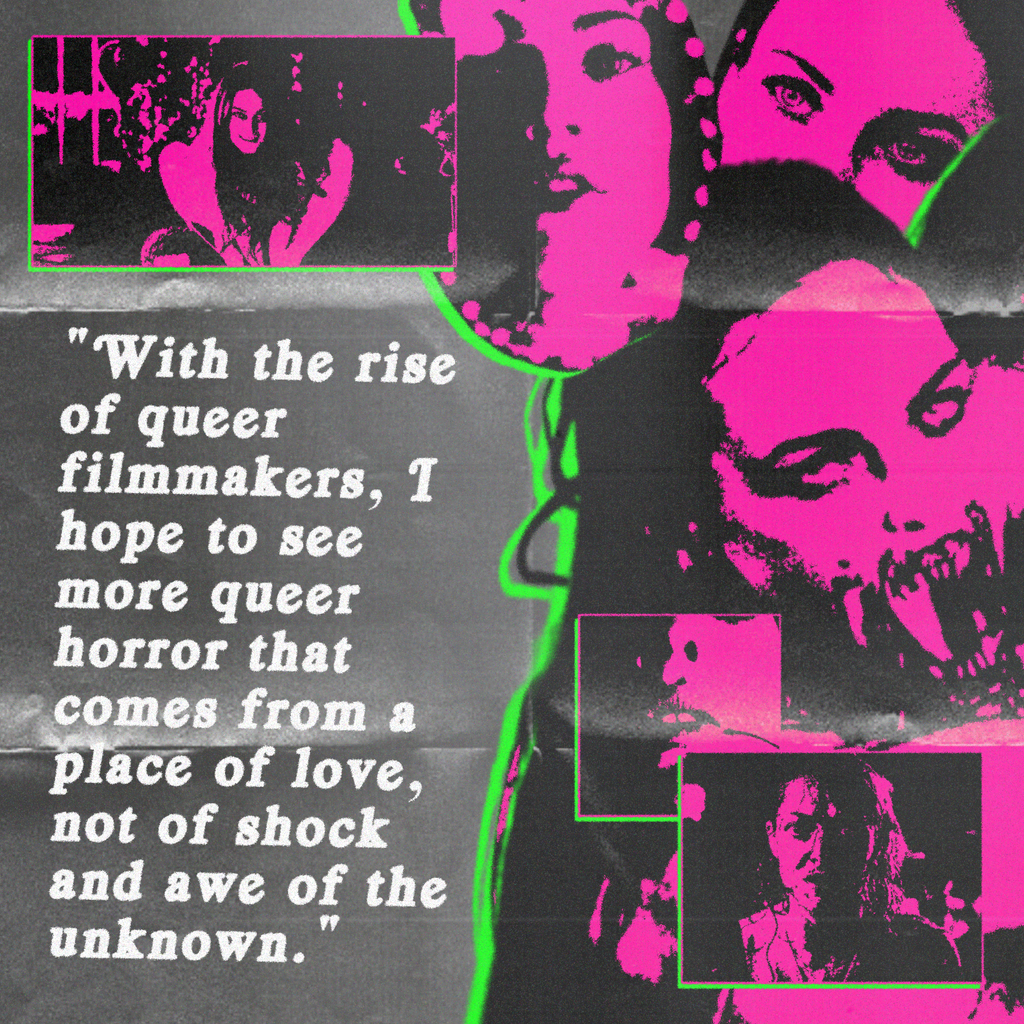
⋆.˚.𖥔˚ about the author ⋆.˚ ᡣ𖥔˚
Finnialla (Finn-all-uh) is a perpetually tired writer and artist. They got their BFA from an art school like an idiot. Since college, they have found work as a staff writer for the Incognito Press, Outlander Magazine, and Democratic Left. They also started PULP lit mag in 2024 and have been published in multiple indie magazines for their poetry. When they aren’t writing, you can usually find them hanging out in a trash can or fighting raccoons for dominance in a Denny’s parking lot. If you want to reach out, you can find them on their website, https://finn-all-uh.org/ or check out their Twitter for weird hyperfixations and 2 am shitty ramblings, (@finnalluh). They stopped biting people, mostly.
Divine Grace
by Gargi P.

She blooms in the morning of spring.
She shines like the moon.
She loves like a constellation and she cries like a rainstorm.
She is resilient and true.Made of stories passed down, anew.
Her laughter dances,
echoes freely across valleys, mountains and lakes.The universe finds a place in her eyes.
The universe of grace and resilience.
She has the true tranquil soul of a human;
Oh, she is what we call a woman.

⋆.˚.𖥔˚ about the author ⋆.˚ ᡣ𖥔˚
Gargi hails from Mumbai, India, and currently resides in Abu Dhabi, United Arab Emirates. Fluent in both English and Hindi, she is a high school senior studying Psychology in Abu Dhabi. Her poetic talents have been recognized, with her work featured in the Writer’s Pocket anthology, including pieces like Radiance and The Silver Linings. Gargi is passionate about reading fiction and thrillers, and she often finds herself writing poems and drafts that fill her Google Docs. Music is another love of hers, with The Arctic Monkeys and The Neighbourhood being her go-to artists. But Gargi’s creativity extends beyond poetry and prose—she is also a talented singer and a skilled scriptwriter, showcasing her versatility as an artist.
RADICAL BODIES: QUEERNESS, PUNK, AND WHY ZINES MATTER
by Surya

“The most important aspect of a zine is that the publication identifies as one.”
Chloe Arnold, Mental FlossSo, what's a zine? A zine, short for ‘magazine’ or ‘fanzine’, is often defined as a small booklet or pamphlet that is self-published and meant for small-scale distribution. However, anything can be a zine. There aren't any strict meanings for it, it can be anything you want it to be. With the definition of a zine being everything and anything, it starts to become a good metaphor.

Emerging in the 1920s - 1930s, launched straight from the DIY culture of the time, zine-making hit the crowds of any group wanting to go against the mainstream. It became a platform for amplifying the voices of marginalised groups, and became a voice for those who thought they had none.
Zine-making was a place for individuals to share their thoughts, ideas, viewpoints, art, poetry, comics, anything. Mini-manifestos, essay collections, flash fiction, anything from the most groundbreaking creative projects to stamp collections stuck on the pages of paper booklets.
Some of the earliest origins of zines were created by black communities during the Harlem Renaissance. “Little Magazines” during the 1920s were created to circulate the empowering voices of the youth's black artists. Another very notable mention of zines before their launch into popularity were the beginnings of fanzines and their roots in science fiction in the 1940s - more specifically Star Trek.
Yet, it wasn't until the rising punk scene of the 1970s where zines truly took off. Aligning with the offbeat nature and DIY-ethos of punk culture, the creation of them saw a huge boom.The ability of the zine to disrupt dominant narratives and to share creation among those shoved aside to the margins of society is a saving grace. The intentional creation of spaces to exist away from the mainstream has empowered everybody from the LGBGQ+ community, subcultures, and marginalised groups.

Zines can be anything, and their radical as well as fluid nature makes them almost indefinable. They're fluid like people, like communities. They mirror their creator; they're part of their creator. A zine is an experience, an education, a collection, an anthology, a novel, a comic, a gallery, a newspaper: a zine can be you.The power of a zine lies not in their content, but in the communities they create; the sparked conversations, the people that they bring together. The zine zips in and out of spaces, and is used as a mascot for so many people. Their footwork in the underground has paved the way for us to share anything — anything and everything.Let us celebrate the radical bodies of the communities that brought us zines. Let us celebrate their queerness, their punk ethos, their dynamic nature. Let us celebrate the safe haven of community, of being able to spread information, of creation. And most of all, let us celebrate and commit to the amplification of the voices which the mainstream often overlooks.

⋆.˚.𖥔˚ about the author ⋆.˚ ᡣ𖥔˚
A 15-year-old word activist and storyteller passionate about amplifying marginalized voices and sparking social change through writing. As a poet, short story writer, essayist, and artist, Surya explores the intersections of identity, queerness, and radical love. Their work is a testament to the power of language to heal, provoke, and unite. They're dedicated to creating inclusive, unapologetic, and beautifully crafted stories that reflect the complexity and diversity of our world.
A Peculiar Affair
by Leslie Hernandez

The royal castle of the Starilis Kingdom was plagued by a somber feeling. The youngest princess had been bedridden because of a strange illness for weeks. Her mother and sisters stubbornly refused to leave her side. The king had ordered his sharpest scholars to search the books for a cure, his most devoted healers to run tests on his daughter, and his most trusted knight general to search for a magical remedy – just in case all else failed.That had been Katherina’s intention; to seek out magical creatures to bring before the king.They would either have a cure already within their culture or within their bodies. The knight general had no qualms slaying a beast to secure the life of the little princess. But that was all before she'd met her.Katherina’s body had grown weary, muscles tense and sore from her heavy armor and days of non-stop walking. She reached what seemed to be a river, and stopped. The water was so clear that she could see the rocks and small fishes within.“A river with calm waters? How new,” she hummed, kneeling down to gather some water into her cupped, freckled hands. She splashed it onto her face, sighing at the refreshing feeling.“They will remain calm if you do not anger me, knight,” a sweet voice cooed. Katherina stumbled back, grabbing her sword quickly.“Who goes there?” she called out, her voice strong yet with an undertone of fear laced within it. The same voice giggled and Katherina struggled to pinpoint where it came from.“You question me, knight? When you are the one to invade my home?” the voice tsked, giggling mockingly afterward.“Reveal yourself!” the knight demanded, raising her sword and taking a defensive stance. “In the name of King Solaris of the –”“There’s no need for the theatrics,” the voice teased, “for they will not work. You do not order me in my home.”“I said –” Before her next words could leave her mouth, Katherina was interrupted by the previously calm waters of the river growing restless. The water splashed against the river bank, the sounds breaking the once peaceful atmosphere. In the middle of the waves, a weak waterspout began to form. The knight’s lips parted, confused but not fearful. She was prepared to fight for her kingdom.As the waterspout died down, Katherina could weakly make out the figure of a woman. She had long brown hair, and flowers sprouting from the top of her head. Her body was covered only by droplets of water from the river, and her eyes were an enchanting hazel, calling out to Katherina.The knight lowered her sword in awe; the woman before her enchanted her completely.“So quick to lower your defenses, little knight?” the woman teased, exiting the river and approaching Katherina.“Do not!” Katherina exclaimed, raising her sword once more as she pushed away her fascination.“What are you?”“Tell me your name first,” she cooed, placing a finger on the tip of her sword and sliding it up the blade as she walked closer to Katherina.“So you can steal it?” Katherina scoffed, “I am no fool, I have heard enough about you –”“Faes,” the woman interrupted.“You’ve heard of faes. But I am not a fae, my dear.”“Then what kind of creature are you to possess such sorcery?”“I will answer if you give me your name,” the woman smiled. Her finger, unharmed by the blade, reached Katherina’s armor and slid upwards towards her chest plate.The knight hesitated, her lips parting once more but fearful to utter the word. “Katherina,” she finally confessed. “I am Katherina, Knight General from the Starilis Kingdom.”The woman hummed, resting her finger between Katherina’s armor-covered breasts.“Katherina,” she repeated, rolling the r. “I am Kaliphaia, a Potamides nymph.”“A nymph?” Katherina asked, unfamiliar with the term. Kaliphaia stepped closer to the redhead, lips close to her freckled ear.“Yes, this river is mine own,” she whispered, lips brushing against soft skin.“Then I must –”“You seem tense and exhausted, Ser Katherina,” she hummed. “Allow my waters to relax you,” her hands came up to help Katherina dispose of her armor. The knight dropped her sword. “We can discuss whatever you wish after you wash these worries away.”Katherina allowed the nymph to sweep her into the river, shivering from the teasing touches as she undressed.*That initial meeting had happened months ago, even if it felt like only yesterday. Katherina laid on her back, with the playful nymph curled up against her naked chest littered with bite marks.“You bite me too much, little nymph,” Katherina grumbled.“Well, what are your toned muscles for if not chewing?” Kaliphaia grumbled, looking up and giving her a sharp toothed smile. Katherina let out a hearty chuckle at that, gathering the nymph in her muscular arms. “Will you ever let me wash away these freckles, my dear?” she asked, tracing the freckles on Katherina’s sturdy shoulders.“No, they remind me of my mother,” she explained for what felt like the hundredth time. Kaliphaia whined, huffing and puffing. “Do you dislike my freckles so much?”“No, but –”“Then there is no reason to wipe them away.” Katherina pushed a strand of the nymph’s hair away from her face. She leaned forward to smell the flowers residing atop her head.“You humans are all so strange,” the nymph mumbled poutily.

“So you have met other humans?”“Only from afar, when they leave me offerings,” she began. “But none have been sweeter offerings than you,” Kaliphaia teased, leaning up to capture Katherina’s lips. The human embraced her, lips parting to let her in. Katherina gripped the nymph’s hips, dragging her down and closer to her own body.Kaliphaia let out a gentle cry of pleasure, the river behind them growing restless. The nymph tangled her gentle fingers into the redhead’s hair, harshly pulling on the strands as she panted into Katherina’s mouth.Their heated moment was interrupted by the wild splashing of the river, soaking them both. The two pulled away from each other with a gasp, looking at each other in shock.A beat passed, then both burst into laughter. Kaliphaia’s laugh sounded like chirps as she scrunched her eyes closed. Katherina’s was lower, and her eyes were glued to the ethereal nymph on her lap.The knight felt a bitter tug against her lower stomach. She wished she could stay like this forever.*More months passed and Katherina knew she needed to leave soon; the little princess needed her.“When will you show me where the healing waters of Melliata are hidden, my sweet?” Katherina asked, seated on a large rock as the water licked at her feet. Kaliphaia laid on the rock, her lower half submerged within the waters of her river.“Later, my dear,” she dismissed her.“That is always your response,” she leaned down to gently cradle Kaliphaia’s face. “Yet, I need to know now,”“Are you so eager to leave me?” Kaliphaia scoffed. “For a little girl who is most likely dead and buried, her spirit with the gods.”“Kaliphaia, that is enough. Your jealousy is unbecoming,” the knight tutted.“Jealousy? I am not jealous!” she whined, cheeks turning red.“Then help me find the cure for her.”“No!” she exclaimed, lips pouty once more.“Why not?”“The moment I tell you, you will leave me.”“But I will try to come back.”“Come back? You will not!” the nymph’s eyes began to gather tears within them. “You will stay away and explore the world while I am to never leave this river.”“Explore?”“Yes!”“I –”“No! Choose! Us or that stupid kingdom,” Kaliphaia interrupted, presenting the choices to Katherina.“Kaliphaia, that is not fair –”The river grew restless around them, the water slamming against the rocks. “Answer!” the nymph cried out. “Answer me!”Katherina could not bring herself to choose one. She had worked hard to become a general knight and she had promised to give her everything to the kingdom. Yet, Kaliphaia had stolen her heart and had given her some of her best months.

“I cannot choose,” Katherina whispered, heartbroken. “Do not make me choose.”The river became even more chaotic, the nymph’s tears and cries mixing with the sounds of the river to bring about a harmonious disaster – that of heartbreak. Katherina reached out to Kaliphaia but the nymph turned away, diving back into the water.
Katherina held onto the rock she was on, tears streaming down her face as Kaliphaia disappeared. The knight crawled out of the river, kneeling next to it and hoping her nymph would come back. Yet, she did not.Katherina was alone, shoulders slumped forward. She covered her face, shutting her eyes tightly.*Katherina went back to Starilis, hands empty and heart broken. But, to her surprise, she found that the little princess had been healed mere weeks after she had left. Katherina realized that she could have stayed with her sweet Kaliphaia but she lost her.*Katherina reminisces on these moments as she lays on the battlefield. A puddle of blood pools by the wound in her torso. Her sword is next to her; her fingers twitch against its grip. She wishes she could see Kaliphaia one more time. Her eyes slowly flutter shut, body going slack. As she feels her grip on life loosen, she can hear the splashing of Kaliphaia’s river. A smile graces her lips; she hopes Kaliphaia welcomes her with open arms.

⋆.˚.𖥔˚ about the author ⋆.˚ ᡣ𖥔˚
Leslie Hernández Cruz (she/her) is a current English undergrad student at the University of Puerto Rico. She’s a writer and aspiring author who spends most of her free time honing her craft. The rest of her free time is spent reading and going out with friends and family. She’s also part of the staff of Bardics Anonymous, FlowerMouth Press and Unheard Stories Lit Mag.
How To Get A-Gay With Murder
by Jasper Chen

Note: Spoilers for the entirety of Double Indemnity (1944).Obviously. Much has been written about the queercoding in Billy Wilder’s 1944 film Double Indemnity, and it’s not hard to see why. After all, the movie features, at multiple points, a man lighting another man’s cigar and declaring that he loves him. Gay viewers (me) are therefore quick to infer the true nature of the male relationships in the film (gay).I am interested in writing about the queerness of Double Indemnity, but I see no reason to limit that discussion to the relationship between the two main male characters. That’s for two reasons: 1) No one needs a whole essay to tell them it’s gay to light a man’s cigar and tell him you love him. 2) And this one's more important: The themes of homosexuality and identity crises in Double Indemnity don’t end with the homoeroticism of a few suggestively phallic scenes, nor do they begin there. Rather, they underlie the entirety of the movie; all 107 minutes of it.When we meet quick-witted, articulate, cynical insurance salesman Walter Neff (Fred MacMurray), he’s bleeding out in a dimly lit office. Double Indemnity is told through a series of flashbacks as the bloodied Neff recalls the events that brought him to this point. So the film is by no means a mystery; we know whodunnit within the first five minutes—Neff tells us himself.Despite the film taking a bit of time to work up to the murder itself, almost the entire runtime shows Neff after he has fallen into a life of crime. Many of the scenes prior to the murder, too, dwell on him planning the act; as a result, we know almost nothing of Neff’s day-to-day life.Here’s what we do know: Walter Neff is thirty-five years old. He works for the Pacific All-Risk Insurance Company in the deceptively beautiful city of Los Angeles. He drinks beer, he smokes, he is unmarried. Prior to his involvement in the deadly scheme of the film, he has “no visible scars.”He frequently dons a rather nice hat. Sometimes, he bowls to keep his mind off of darker things. His apartment contains floral curtains, a few nice lamps, one couch, at least two houseplants, a small table accompanied by a single chair, and several framed pictures of what might be male boxers but really, it’s too dark to tell. If his living quarters are neat, it is not for the benefit of someone else.Descriptions of Neff’s extra-film identity are kept brief, perhaps deliberately so. From the very beginning, he is an ambiguous and intensely lonely figure. The film is almost claustrophobic: Neff’s life seems to exist solely in the context of the Pacific All-Risk Insurance Company. When we get a brief scene of him bowling, he’s alone. In the first flashback we see of him, he’s going door-to-door selling insurance policies. To establish his alibi, he calls a colleague—ostensibly because he wants a record of the call, but it does make you wonder: does he have anyone else to phone? And when Neff departs to commit his perfect crime, he rigs up a contraption to check if there’s “a phone call or visitor while he is away.” But no one calls. No one visits.Without any glimpse of Neff’s life, we become unsure of his identity. It seems as though the only personality he inhabits is “insurance salesman.” Even as he bleeds out and confesses to his crime, in the most terrifying and important moment of his life, he identifies himself as such. He is an insurance salesman as he lives, and sitting in an office at the Pacific All-Risk Insurance Company, he is an insurance salesman as he dies.

Who are his friends? What does he love? Who is Walter Neff? The viewer doesn’t know, and really, neither does he.Here lies our first hint of the relentless queercoding in this film. Everyday, “conventional” life is often centered around heterosexual notions of normality (heteronormativity, you might say). Imagine a “normal” American family as drawn by a 1940s artist (or in many parts of the world, an artist of today), and you’re probably picturing a heterosexual couple with two children, probably a girl and probably a boy. The father works some sort of busy job, say, at an insurance company; the mother stays home and watches the kids; and they probably live in a segregated suburb.Neff exists in this “normal” world. But he is severely uncomfortable with the idea of living a conventional life forever. When Barton Keyes (Edward G. Robinson), a claims manager at the Pacific All-Risk Insurance Company, asks Neff why he doesn’t just settle down and get married already, Neff dodges the question. He understands the life he is supposed to live, but he can’t follow through with it. Something is holding him back from that notion of normality: the working father, the dutiful housewife, the loving children. This is the underlying crisis that causes Neff’s fractured identity.In this context, the “unconventional” lifestyle, such as the criminal one Neff chooses to pursue, is deeply disruptive to the heterosexual norms laid out for society. This is the lifestyle that fascinates Neff; this is the lifestyle he falls into.If this theory seems far-fetched to some, it is probably (probably) due to the heterosexual romance that takes up much of the screentime in Double Indemnity. Neff himself confesses that he killed a man—Mr. Dietrichson—for money and for a woman. The woman in question is the beautiful Mrs. Dietrichson (Barbara Stanwyck), or as we soon come to know her—Phyllis.
When Neff visits Phyllis while attempting to get Mr. Dietrichson to renew his auto insurance, Phyllis makes clear that she wouldn’t mind getting rid of her husband, trading him for some cold, hard cash from an accident insurance policy. Neff initially rejects her. But it’s not long before Neff falls for her charms and her scheme, planning the perfect crime and going as far as to carry out the fatal act himself.Based on a novel written by a man, directed by a man working off a screenplay written by two men, and released in 1944, Double Indemnity is inclined to lend Walter Neff rather more sympathy than Phyllis. It is Neff who gets to tell his story, and the very act of confession (as well as the fact we are placed solidly in Neff’s head through his narration) means we empathize with him. Phyllis doesn’t confess, and she doesn’t tell her story. Neff shoots her dead before she can do either of these things. He cuts her down as she confesses she might feel something for him. If Phyllis Dietrichson never shows remorse for her actions, it might be because the instant she displays honest emotion, she is murdered.“Ever think of a divorce?” Neff asks as Phyllis explains why she wishes to get rid of her husband in such a violent manner. “He wouldn’t give me a divorce,” she jeers. It’s a sharp reminder of the misogynistic institution she lives in. She doesn’t like where she is, and she has no way out. And of course, there is the queer subtext of Phyllis dancing through relationships with various men and discarding them after—almost as if she does not enjoy her affairs at all.Phyllis, in contrast to Neff, is quite assured of her identity. Although she adopts many personas throughout the film, based on who she is trying to convince of what, she remains clear on who she is. She admits it to Walter, right before he kills her: “No, I never loved you, Walter. Not you, or anybody else.” Phyllis knows she could never fit into the conventional, heteronormative life expected of her. She knows she has no love for any man she encounters, but she understands that she must use them as a means of survival in a world where she is offered very few escape routes. If you were to leave Walter Neff’s narration for a moment, you might easily view the film in this light: an ending chapter in the long tale of Phyllis’ struggle to survive.

Who are his friends? What does he love? Who is Walter Neff? The viewer doesn’t know, and really, neither does he.Here lies our first hint of the relentless queercoding in this film. Everyday, “conventional” life is often centered around heterosexual notions of normality (heteronormativity, you might say). Imagine a “normal” American family as drawn by a 1940s artist (or in many parts of the world, an artist of today), and you’re probably picturing a heterosexual couple with two children, probably a girl and probably a boy. The father works some sort of busy job, say, at an insurance company; the mother stays home and watches the kids; and they probably live in a segregated suburb.Neff exists in this “normal” world. But he is severely uncomfortable with the idea of living a conventional life forever. When Barton Keyes (Edward G. Robinson), a claims manager at the Pacific All-Risk Insurance Company, asks Neff why he doesn’t just settle down and get married already, Neff dodges the question. He understands the life he is supposed to live, but he can’t follow through with it. Something is holding him back from that notion of normality: the working father, the dutiful housewife, the loving children. This is the underlying crisis that causes Neff’s fractured identity.In this context, the “unconventional” lifestyle, such as the criminal one Neff chooses to pursue, is deeply disruptive to the heterosexual norms laid out for society. This is the lifestyle that fascinates Neff; this is the lifestyle he falls into.If this theory seems far-fetched to some, it is probably (probably) due to the heterosexual romance that takes up much of the screentime in Double Indemnity. Neff himself confesses that he killed a man—Mr. Dietrichson—for money and for a woman. The woman in question is the beautiful Mrs. Dietrichson (Barbara Stanwyck), or as we soon come to know her—Phyllis.
When Neff visits Phyllis while attempting to get Mr. Dietrichson to renew his auto insurance, Phyllis makes clear that she wouldn’t mind getting rid of her husband, trading him for some cold, hard cash from an accident insurance policy. Neff initially rejects her. But it’s not long before Neff falls for her charms and her scheme, planning the perfect crime and going as far as to carry out the fatal act himself.Based on a novel written by a man, directed by a man working off a screenplay written by two men, and released in 1944, Double Indemnity is inclined to lend Walter Neff rather more sympathy than Phyllis. It is Neff who gets to tell his story, and the very act of confession (as well as the fact we are placed solidly in Neff’s head through his narration) means we empathize with him. Phyllis doesn’t confess, and she doesn’t tell her story. Neff shoots her dead before she can do either of these things. He cuts her down as she confesses she might feel something for him. If Phyllis Dietrichson never shows remorse for her actions, it might be because the instant she displays honest emotion, she is murdered.“Ever think of a divorce?” Neff asks as Phyllis explains why she wishes to get rid of her husband in such a violent manner. “He wouldn’t give me a divorce,” she jeers. It’s a sharp reminder of the misogynistic institution she lives in. She doesn’t like where she is, and she has no way out. And of course, there is the queer subtext of Phyllis dancing through relationships with various men and discarding them after—almost as if she does not enjoy her affairs at all.Phyllis, in contrast to Neff, is quite assured of her identity. Although she adopts many personas throughout the film, based on who she is trying to convince of what, she remains clear on who she is. She admits it to Walter, right before he kills her: “No, I never loved you, Walter. Not you, or anybody else.” Phyllis knows she could never fit into the conventional, heteronormative life expected of her. She knows she has no love for any man she encounters, but she understands that she must use them as a means of survival in a world where she is offered very few escape routes. If you were to leave Walter Neff’s narration for a moment, you might easily view the film in this light: an ending chapter in the long tale of Phyllis’ struggle to survive.

There are, of course, other readings of Double Indemnity. It is a film with a million themes lurking in dark shadows, pretending to be something else. “It is achingly complex in its relationship to the thematic fuel that powers noir—alienation, masculinity, desire, and the dreams and fears of white America,” writes Angelica Jade Bastién in a fantastic essay on the film, with particular focus on the racial commentary in the movie.In the decades since its release, Double Indemnity has gone on to be widely accepted as one of the greatest films of all time. Phyllis Dietrichson is in many ways the model for the femme fatale, the movie itself is seen as the definitive film noir, and it’s spawned quite a few essays, criticisms, and parodies. Billy Wilder, the film’s director, probably (probably) never intended the homoerotic and queer subtext in Double Indemnity. He was, however, likely aware of the topic: he would go on to direct Some Like It Hot, a film about a pair of crossdressing male musicians with one of the most quotable endings of all time (no, I will not quote it here, use Google), and The Private Life of Sherlock Holmes—a Sherlock Holmes adaptation in which Holmes outright declares himself to be gay and in a relationship with Watson, albeit as a foolish lie to avoid the attentions of an overbearing admirer. (Wilder, of course, also directed a host of other well-known and well-received movies without such queer subtext, although I do believe the golden rule of literature is that any story can be queer if you read it long enough.)But in spite of the endless films similar to it, I return constantly to Double Indemnity. For its witty dialogue, for its endlessly fascinating characters, and for its implications—in the crackle of the match Neff holds to light Keyes’ cigar, and in the unflinching determination in Phyllis’ eyes as she prepares to fight against a life she could never fit into.
⋆.˚.𖥔˚ about the author ⋆.˚ ᡣ𖥔˚
Jasper is a trans and queer writer from California. He is currently a senior in high school with an interest in writing and publishing. He has been described as "eccentric" a worrying amount of times. He's a fan of Sherlock Holmes, literary fiction, blue jeans, Bikini Kill, and every piece of transgender art he can find.







